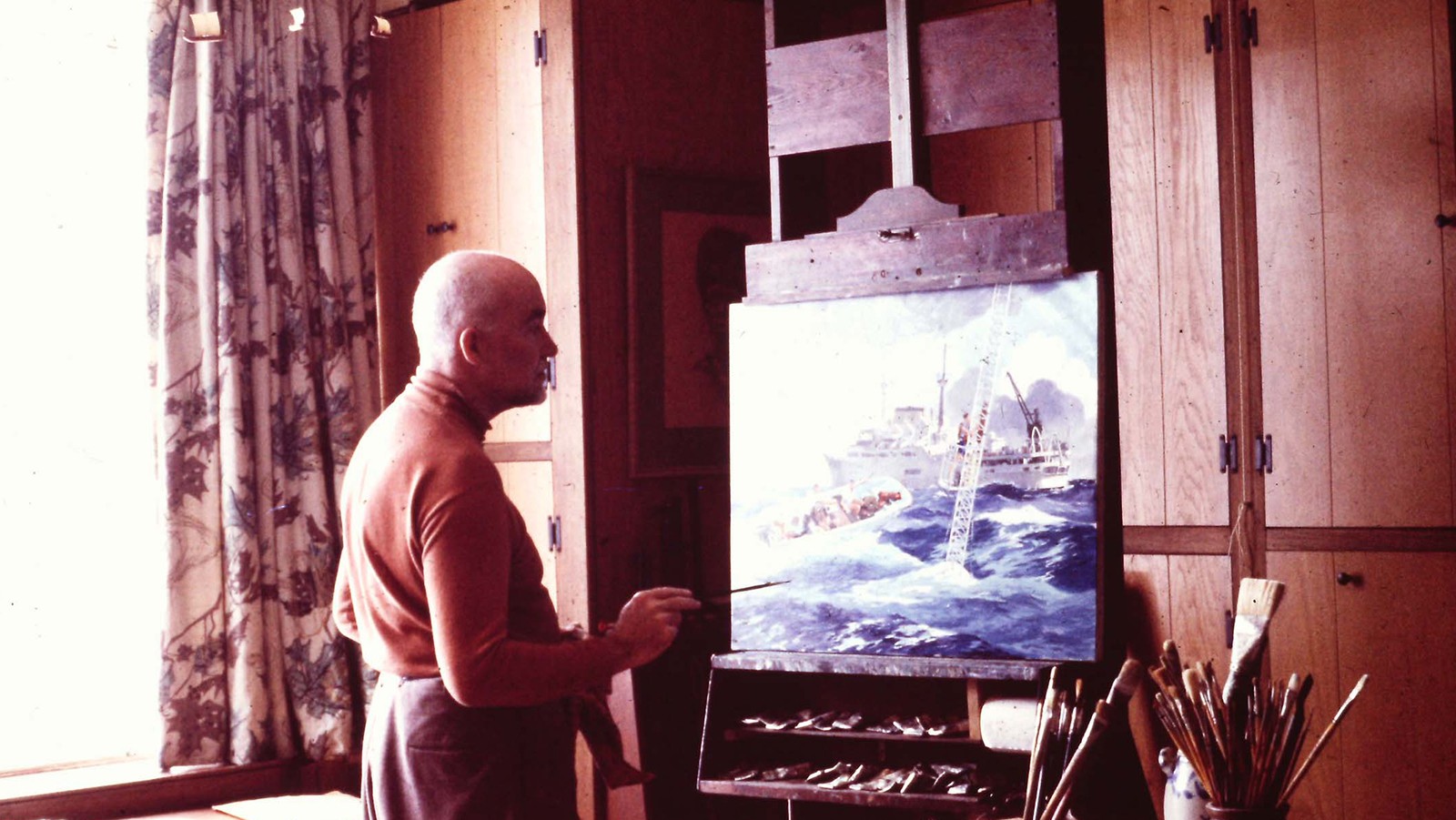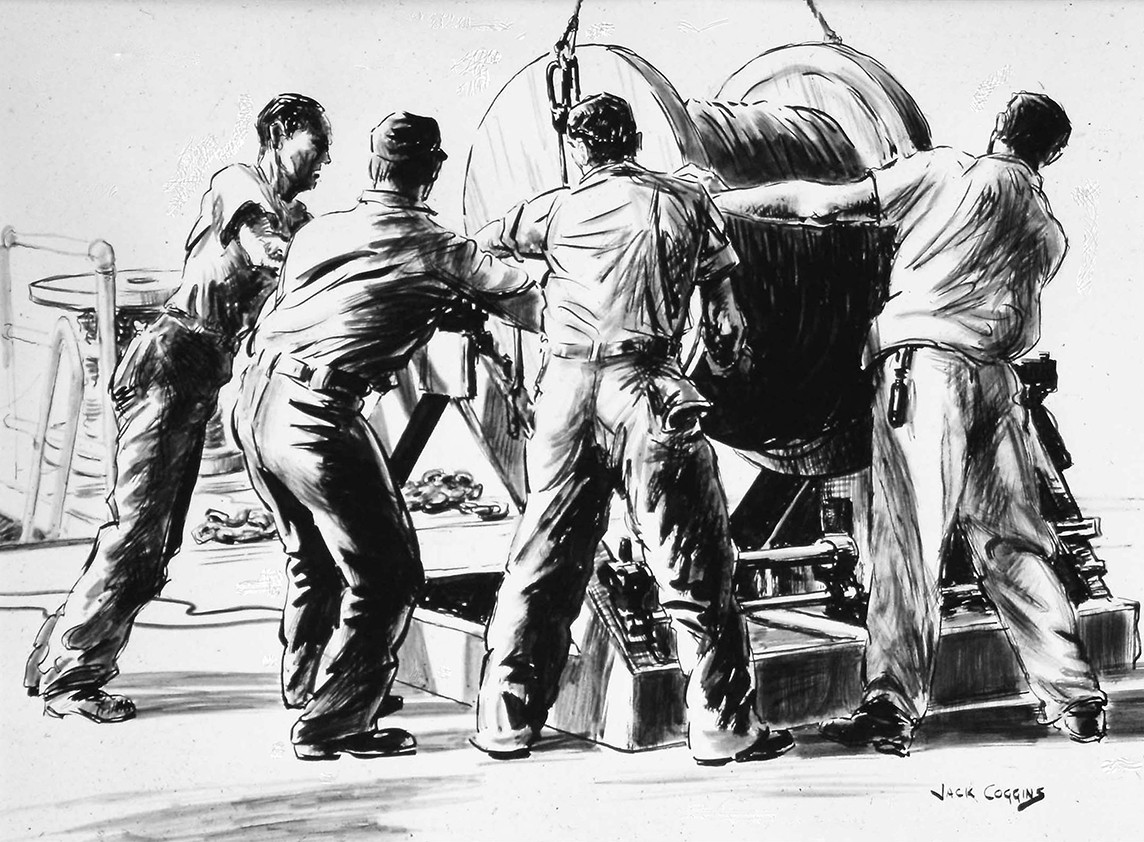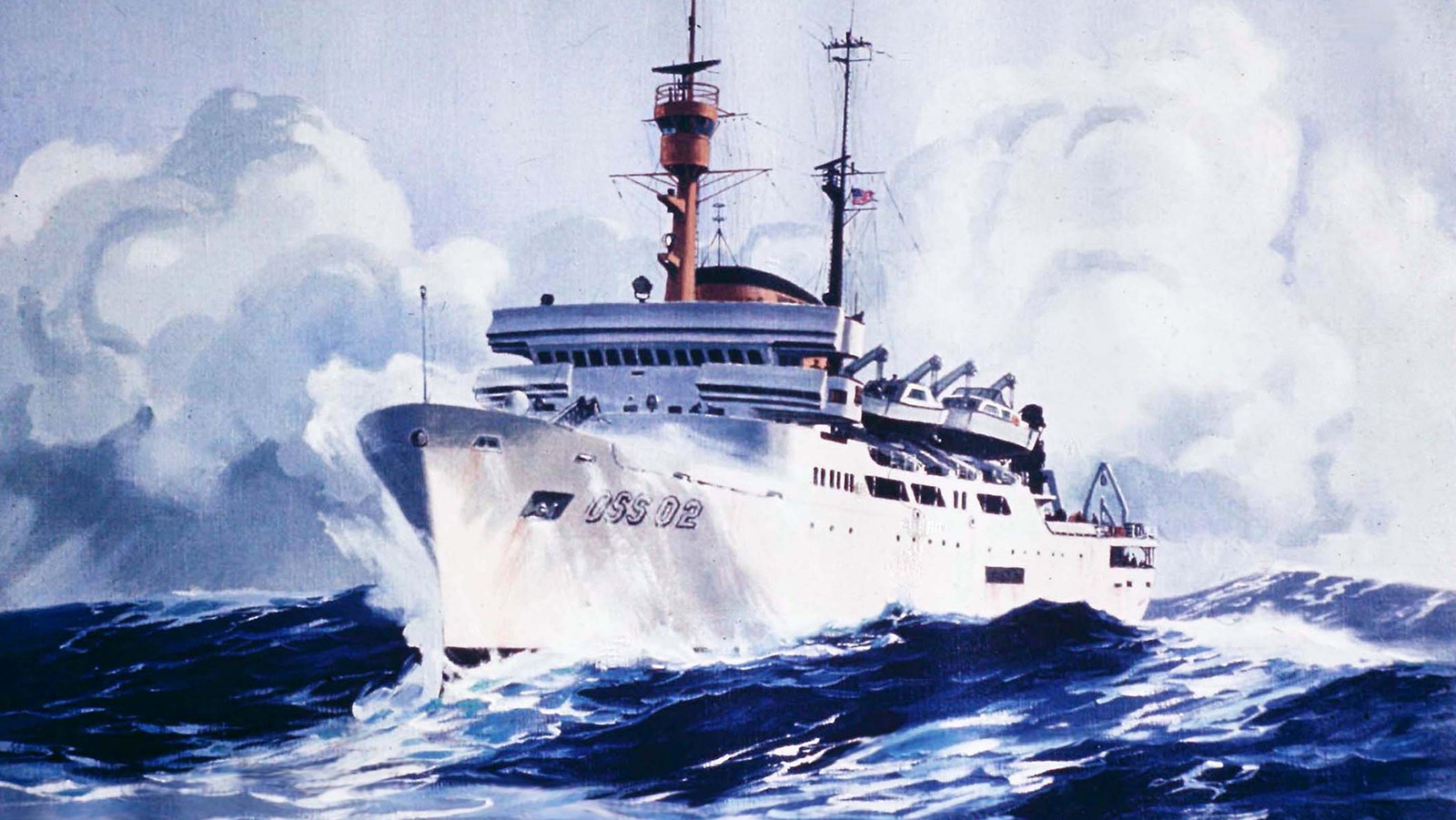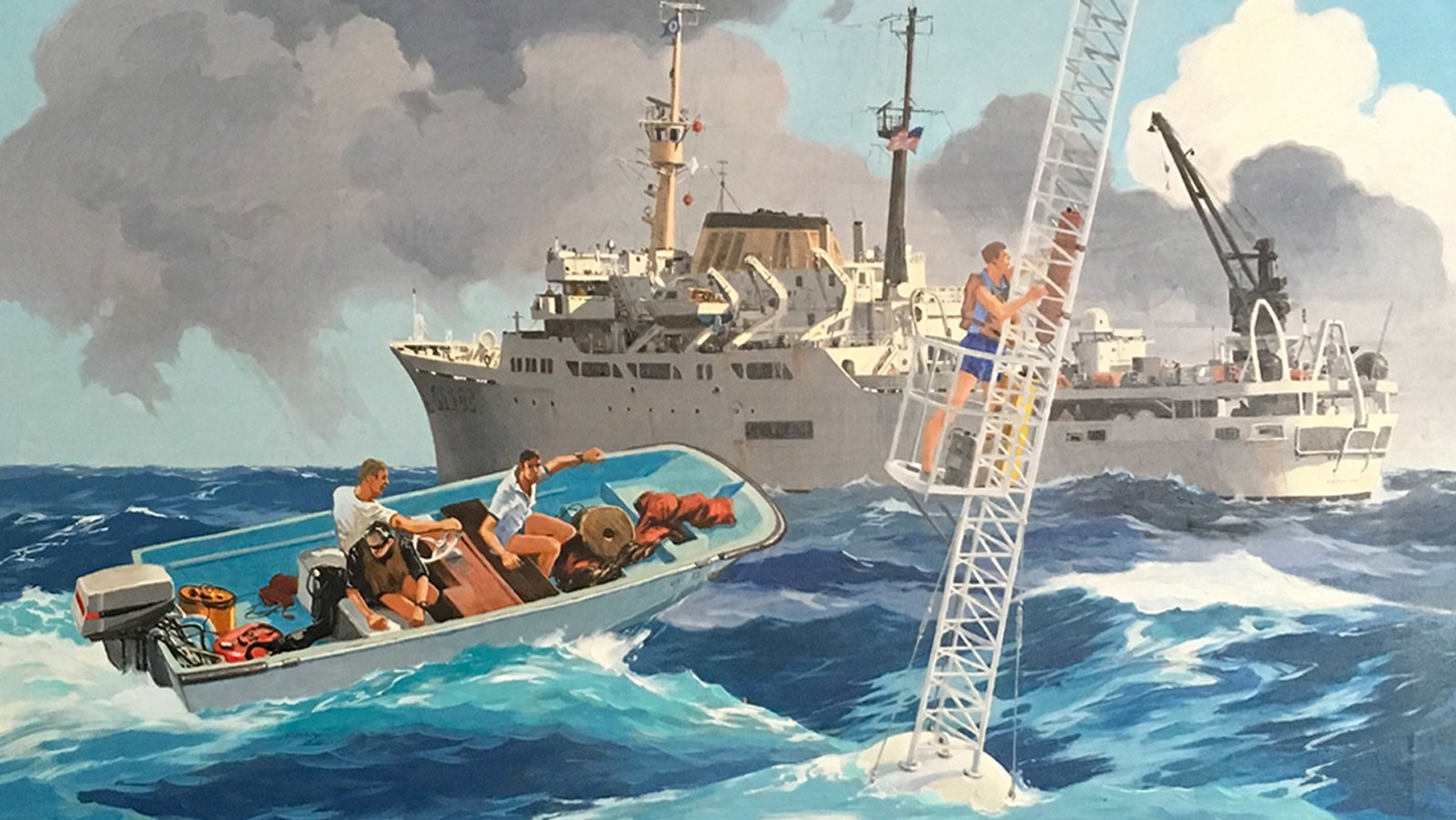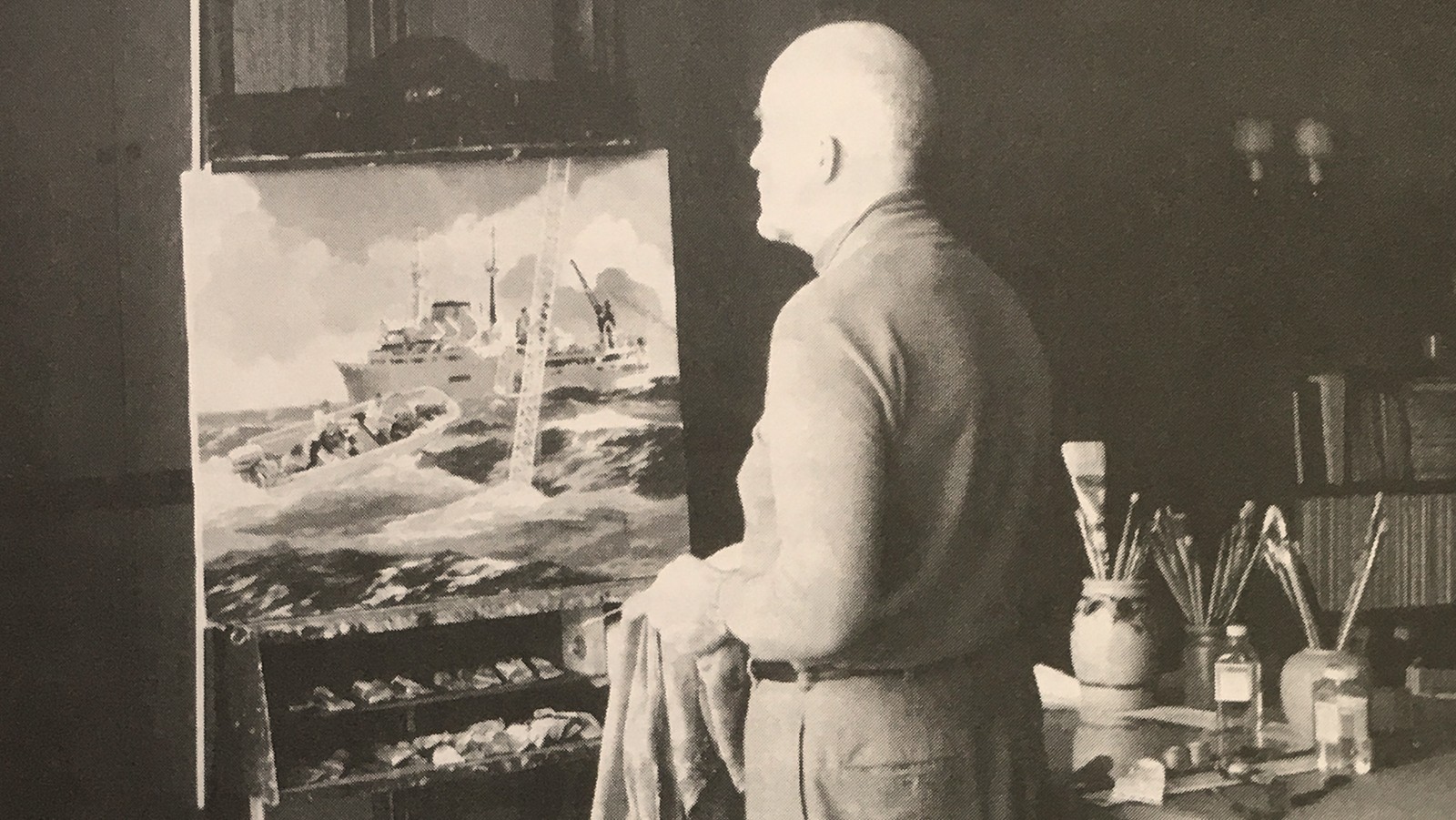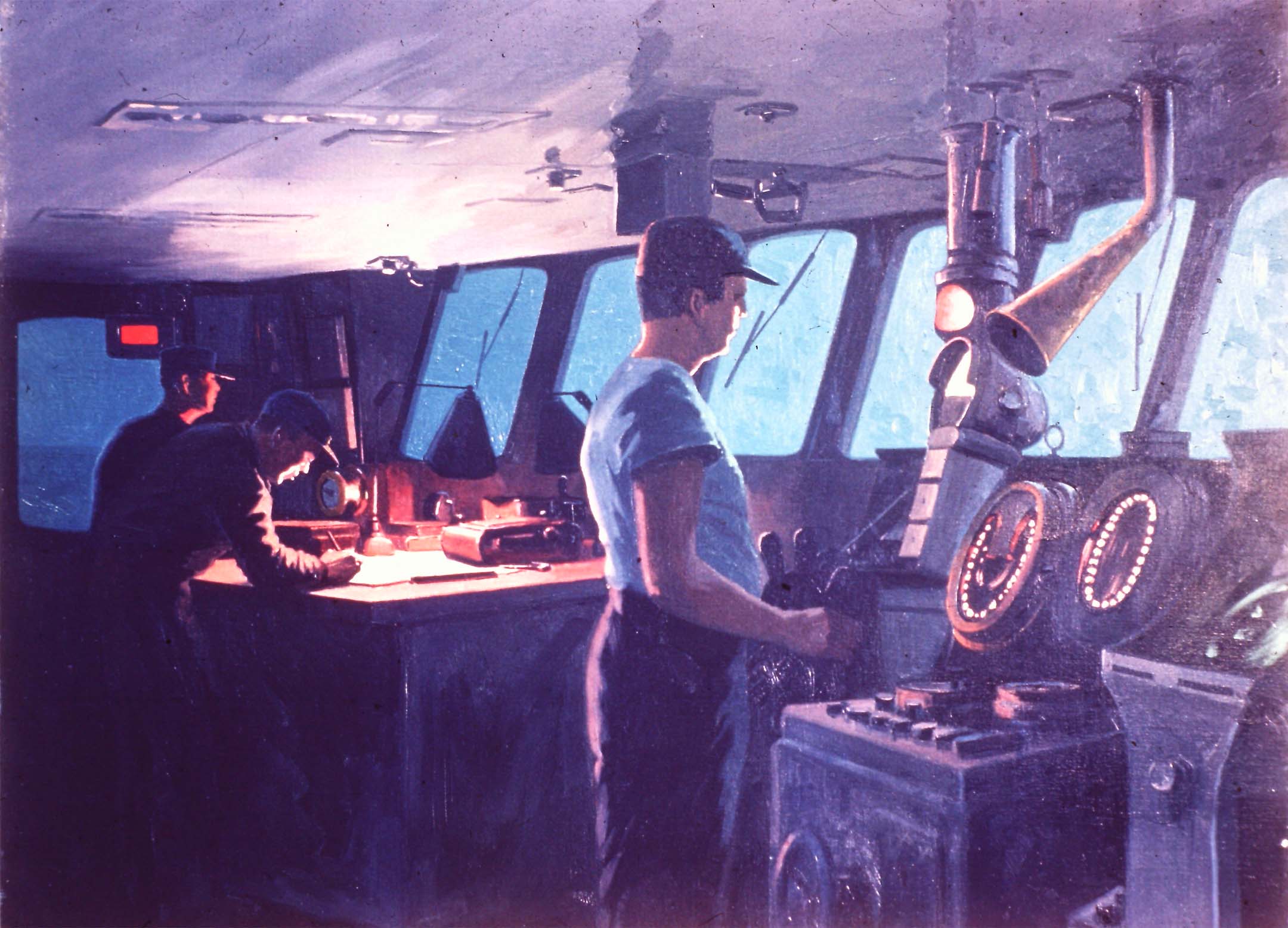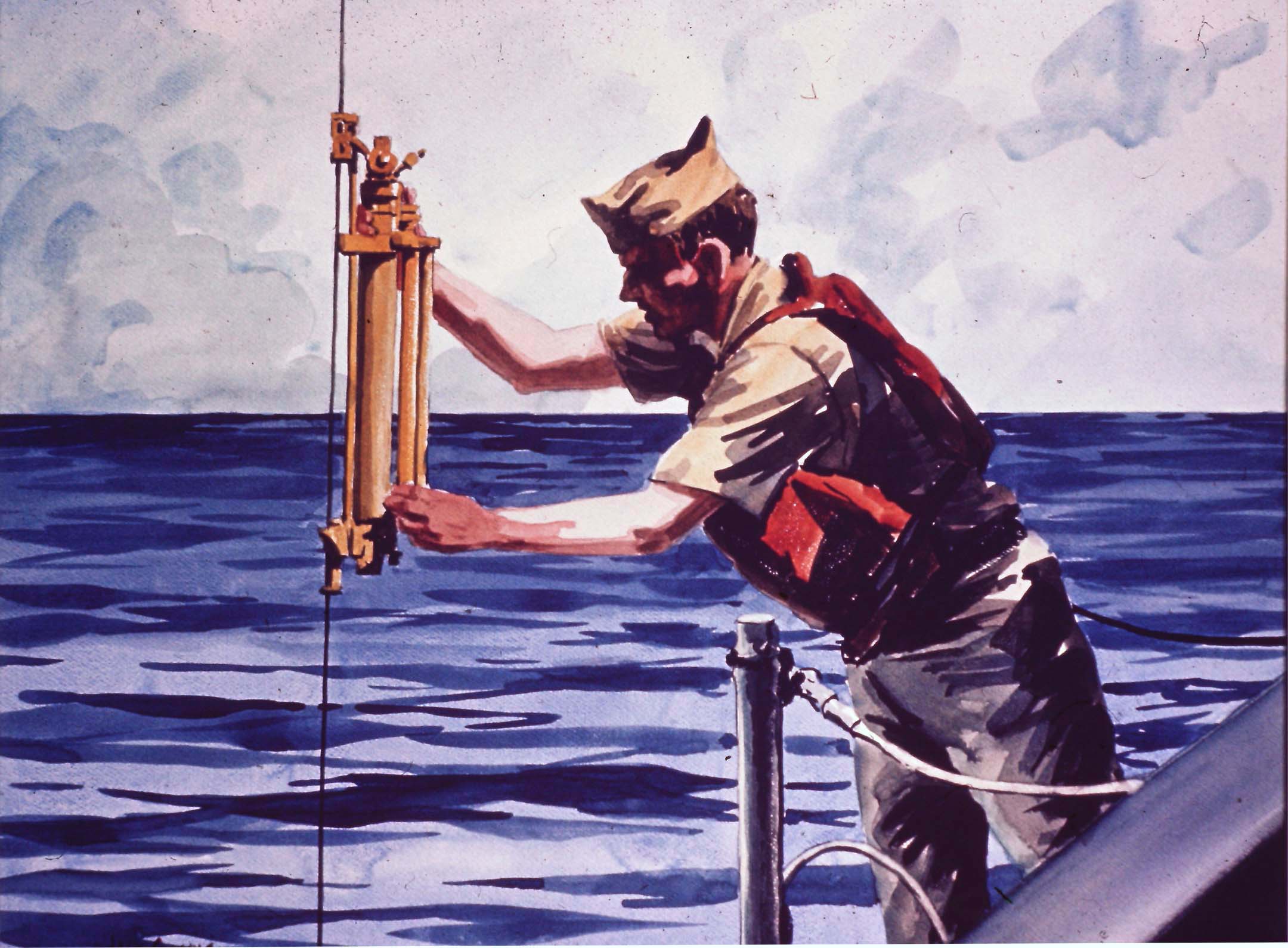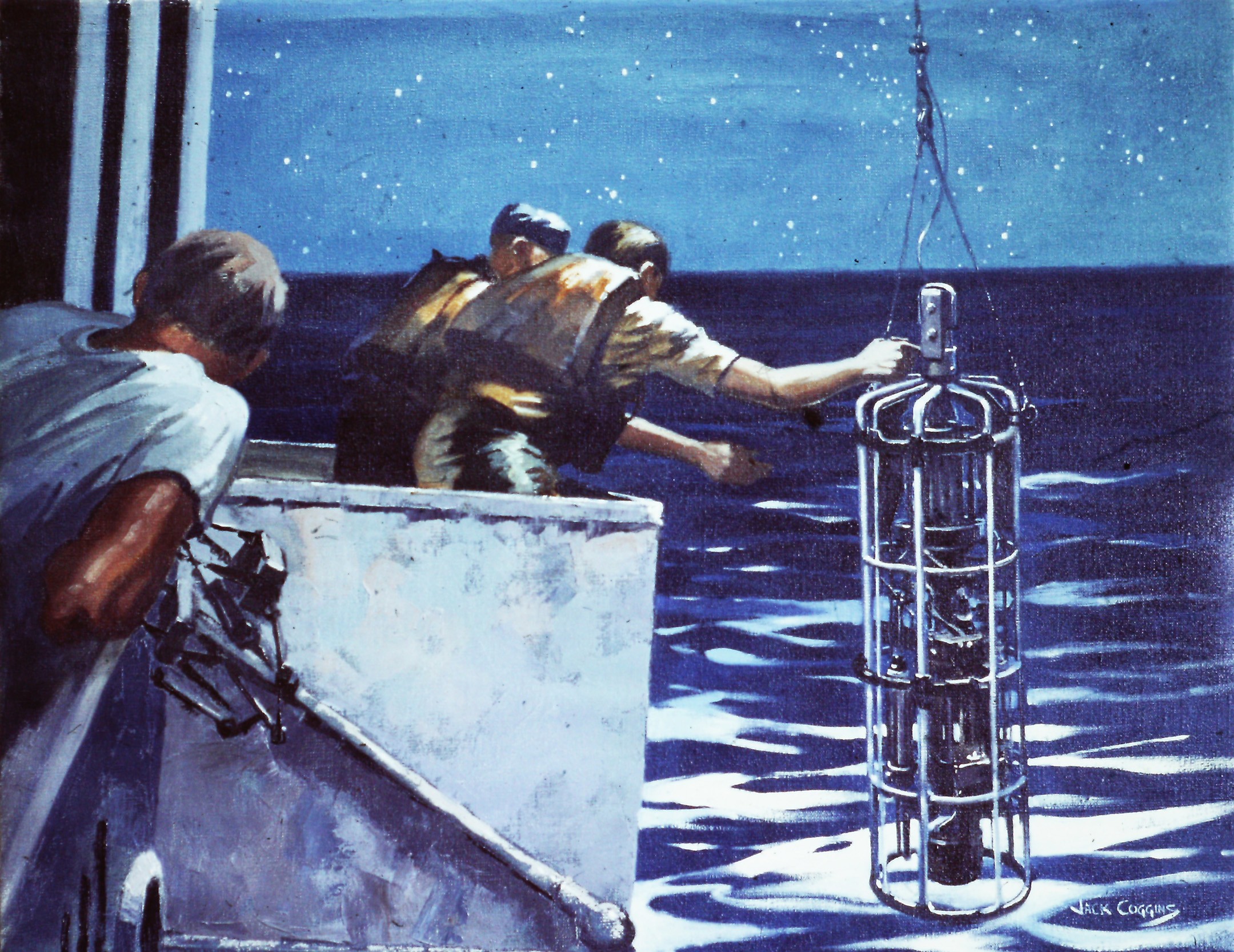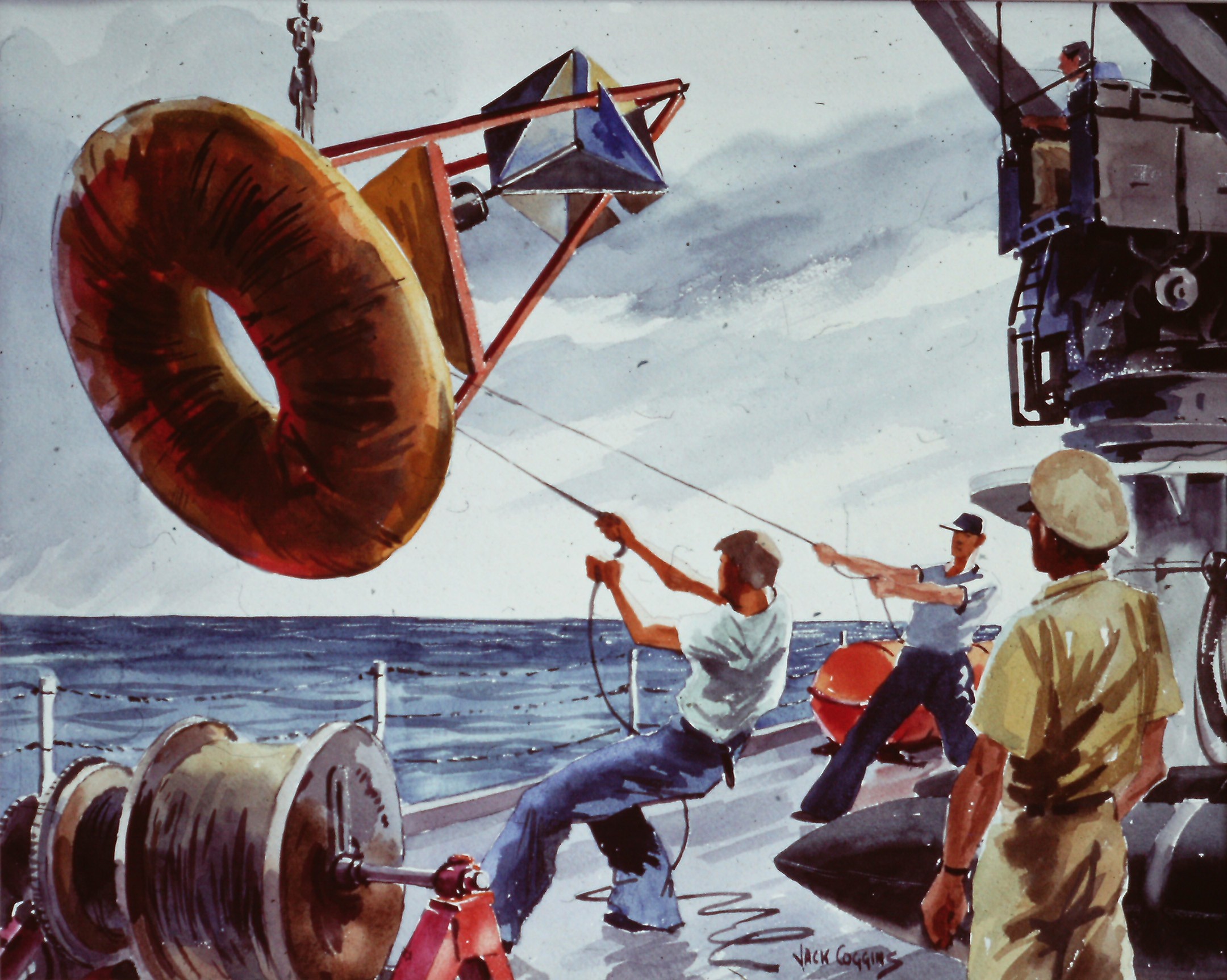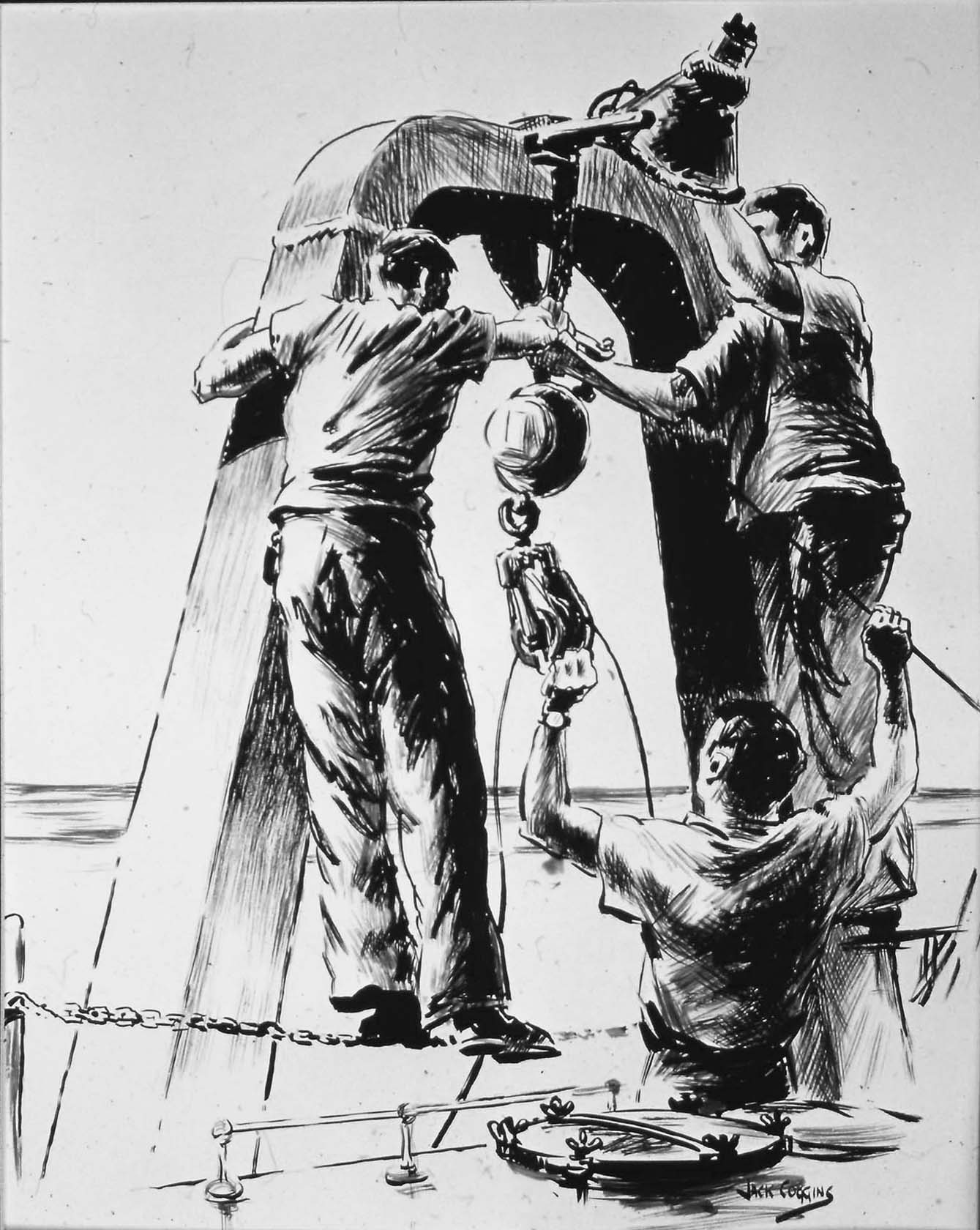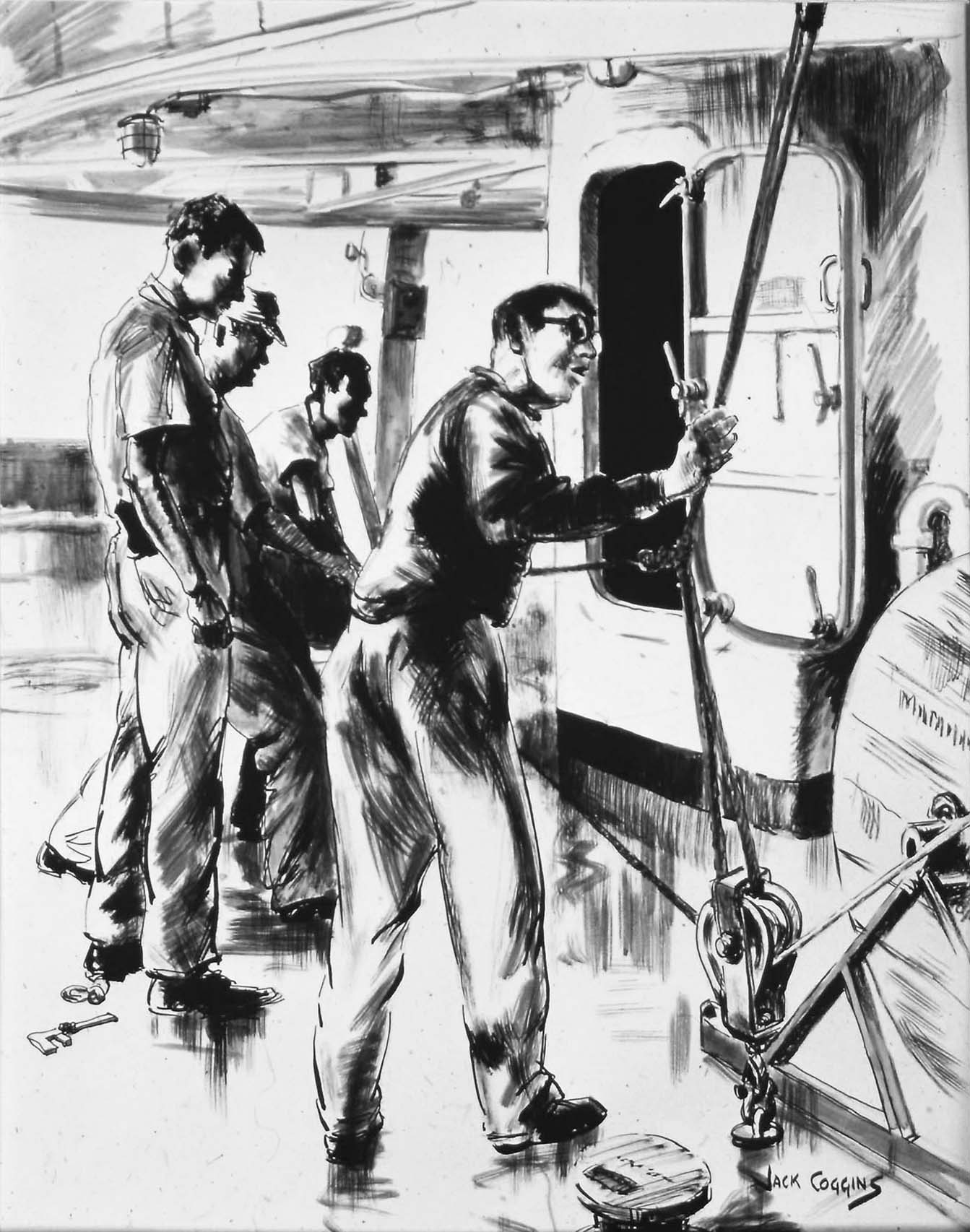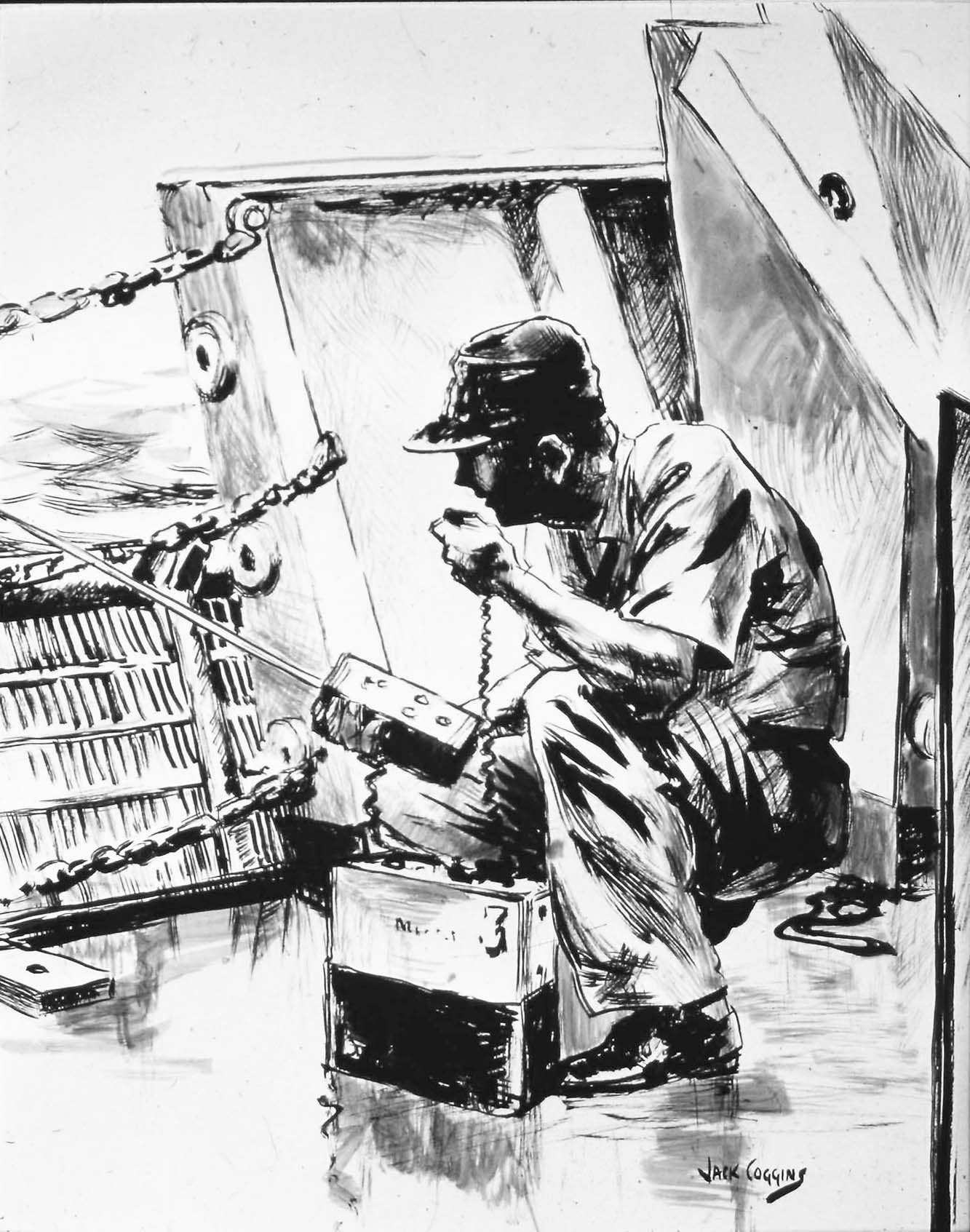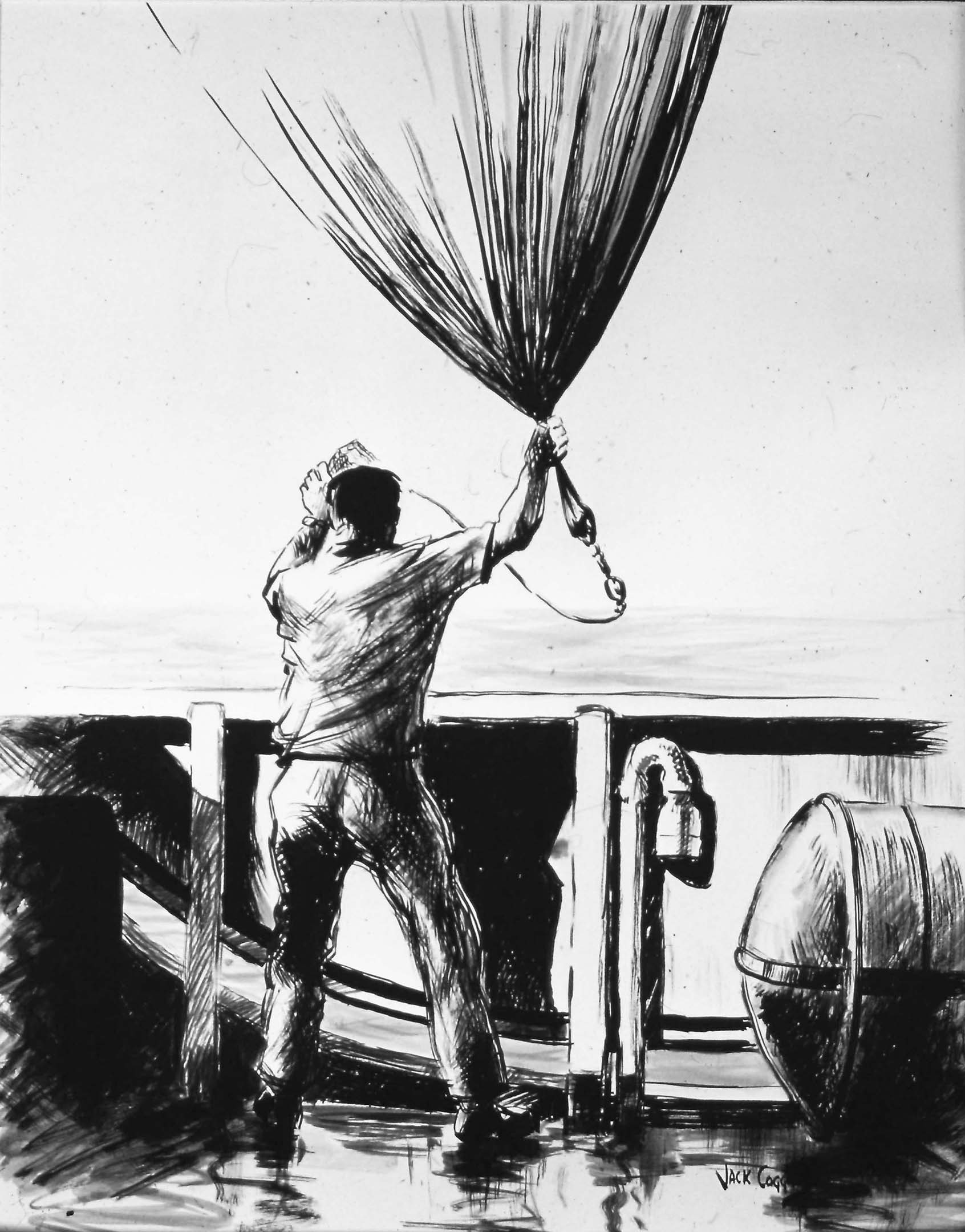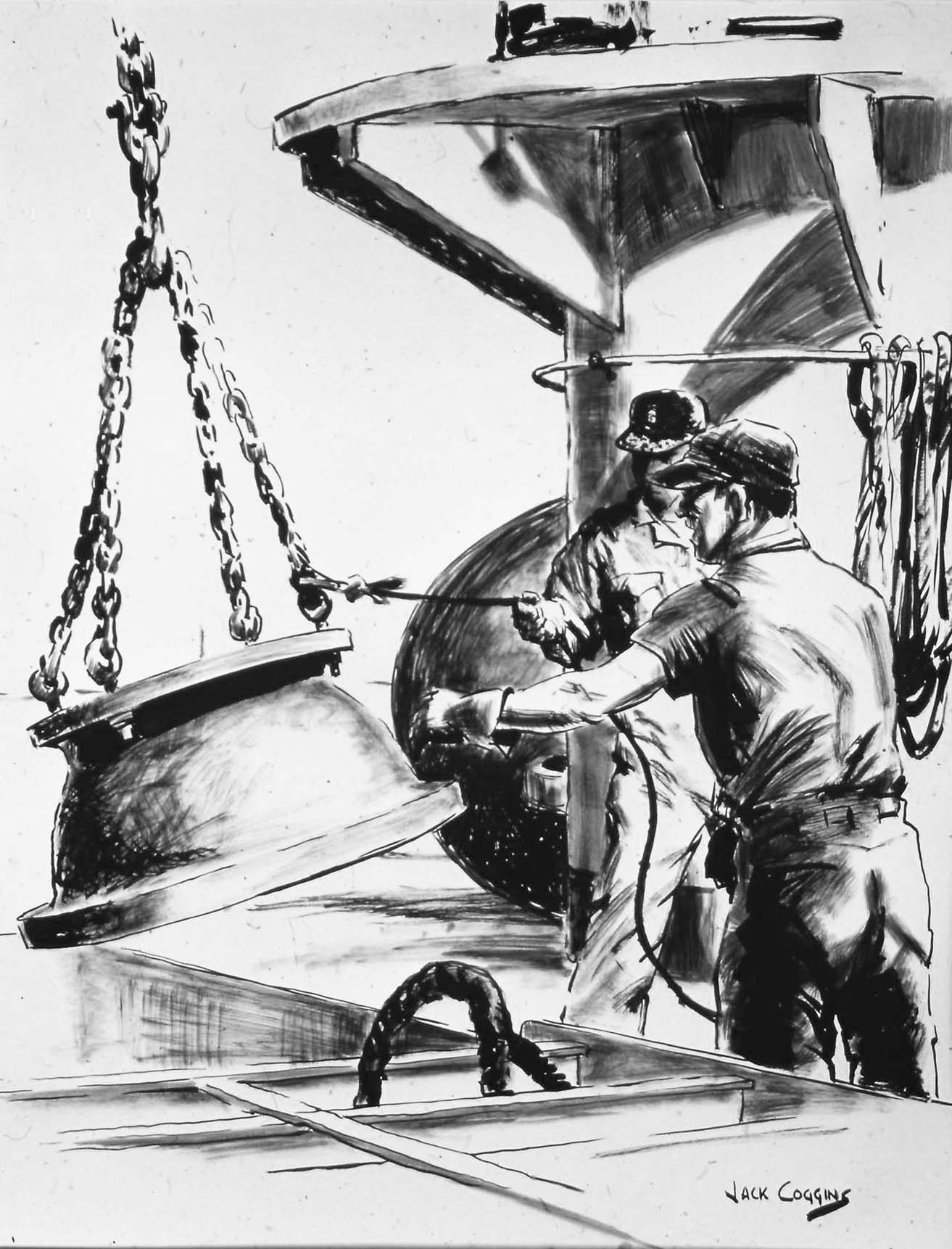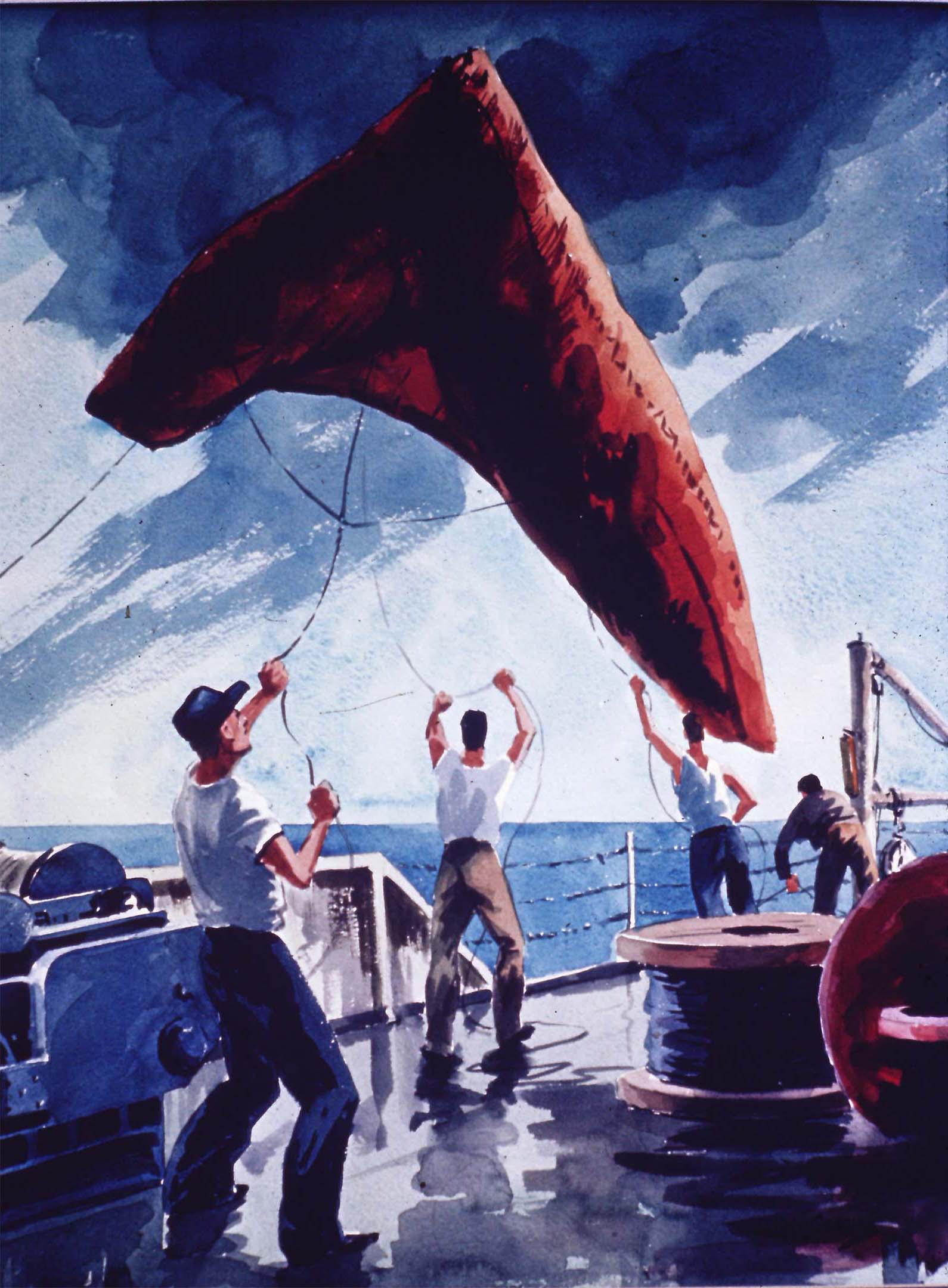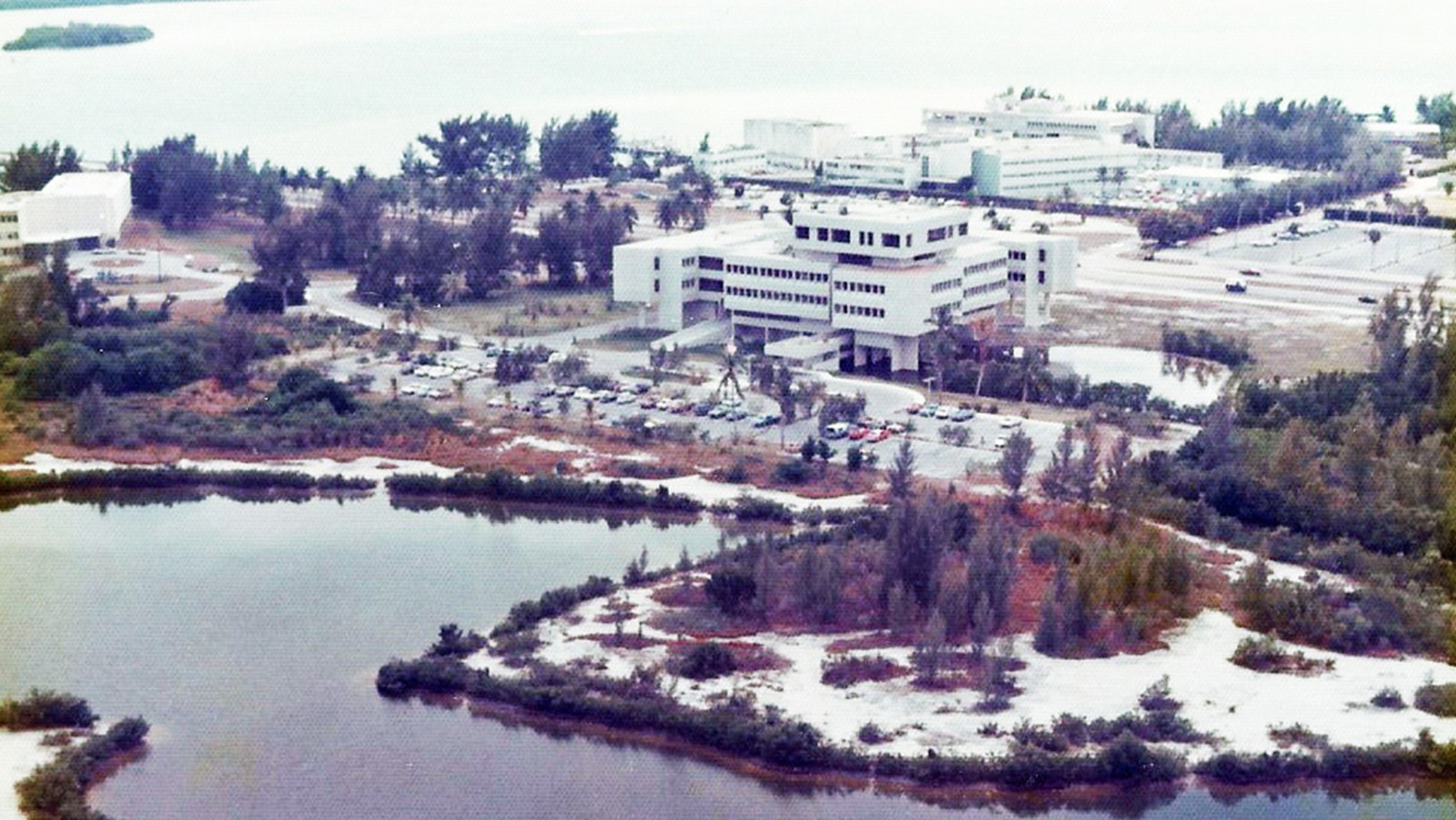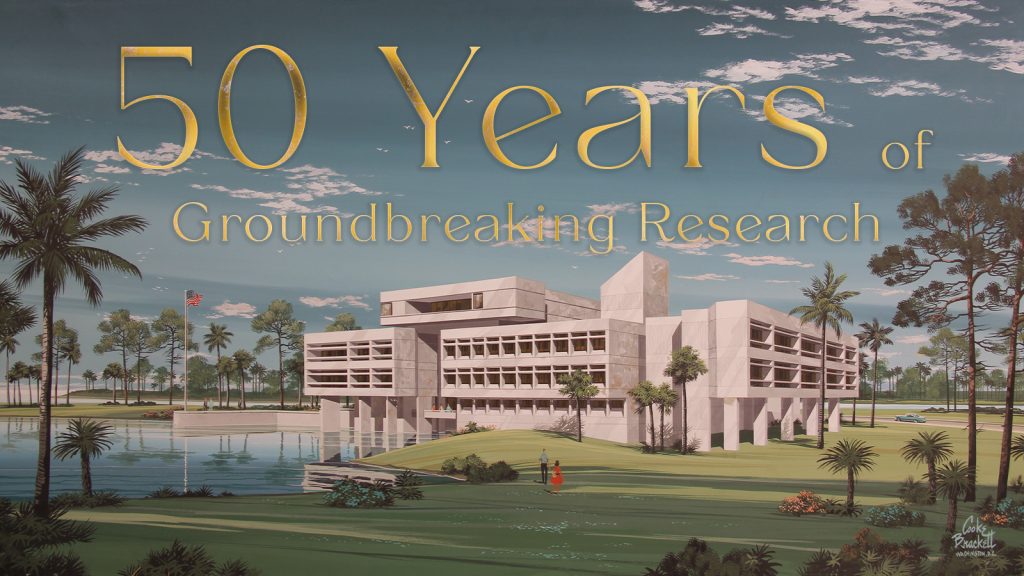AOML Celebrates Fifty Years
This year, the Atlantic Oceanographic & Meteorological Laboratory celebrates fifty years of groundbreaking research. What started as a collection of smaller laboratories in the late sixties, strides forward as a leader unified in NOAA’s mission to save lives through better understanding of our natural systems.
Historical Background
Roots in Coastal Charting
The deeper roots of AOML can be traced to the oceanographic investigations of the U.S. Coast Survey beginning in the mid-19th century under the direction of Professor A.D. Bache, great grandson of Benjamin Franklin and a pre-eminent U.S. science figure of the age. In subsequent decades, the urgency of charting coastal waters in support of growing commerce, a task increased by the acquisition of Alaska, Hawaii, and other island territories, came to require all the resources of the Coast Survey.
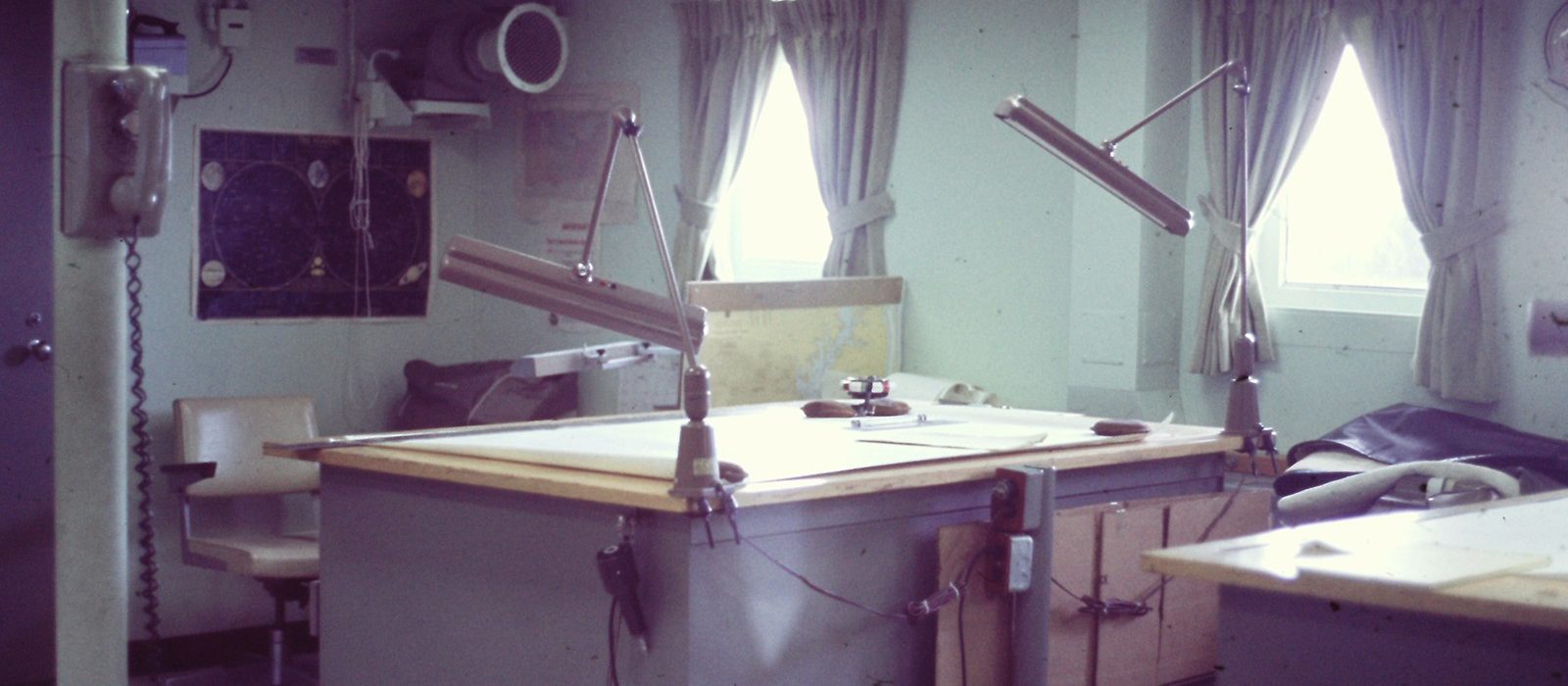
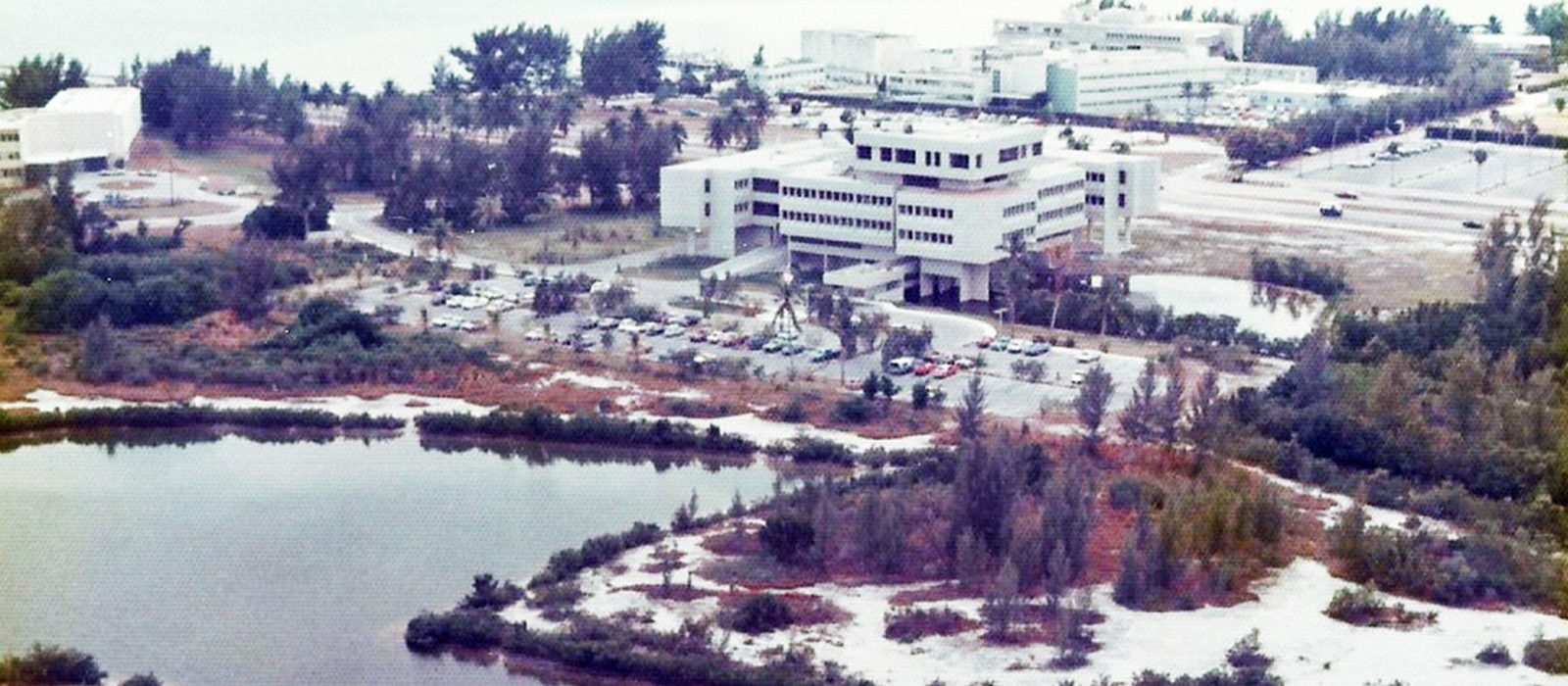
Constructing our Facility
The modern era can be considered to have begun during the 1960s. In early 1966, an Institute for Oceanography was created, primarily from research groups of the then U.S. Coast and Geodetic Survey of the Environmental Science Services Administration (ESSA, forerunner of NOAA). The following year the Institute was relocated to Miami for a variety of reasons. All of these groups were reorganized as the Atlantic Oceanographic and Meteorological Laboratories (AOML) and by 1973 took occupancy in a new facility constructed on Virginia Key.
Observations in Marine Geology
Emphasis at AOML continued to be on making and interpreting observations of the ocean and atmosphere from ships, buoys, research aircraft, satellites, and other remote sensors. In the beginning, study of the geology, geophysics, and sedimentation of the seafloor was the largest activity of the Laboratory.
When AOML opened its doors, it consisted of 4 different laboratories: Physical Oceanography Laboratory, Sea-Air Interaction Laboratory, Marine Geology & Geophysics Laboratory and Ocean Remote Sensing Laboratory. In 1976, the Ocean Remote Sensing Laboratory is abolished, and an Ocean Chemistry Laboratory is created.
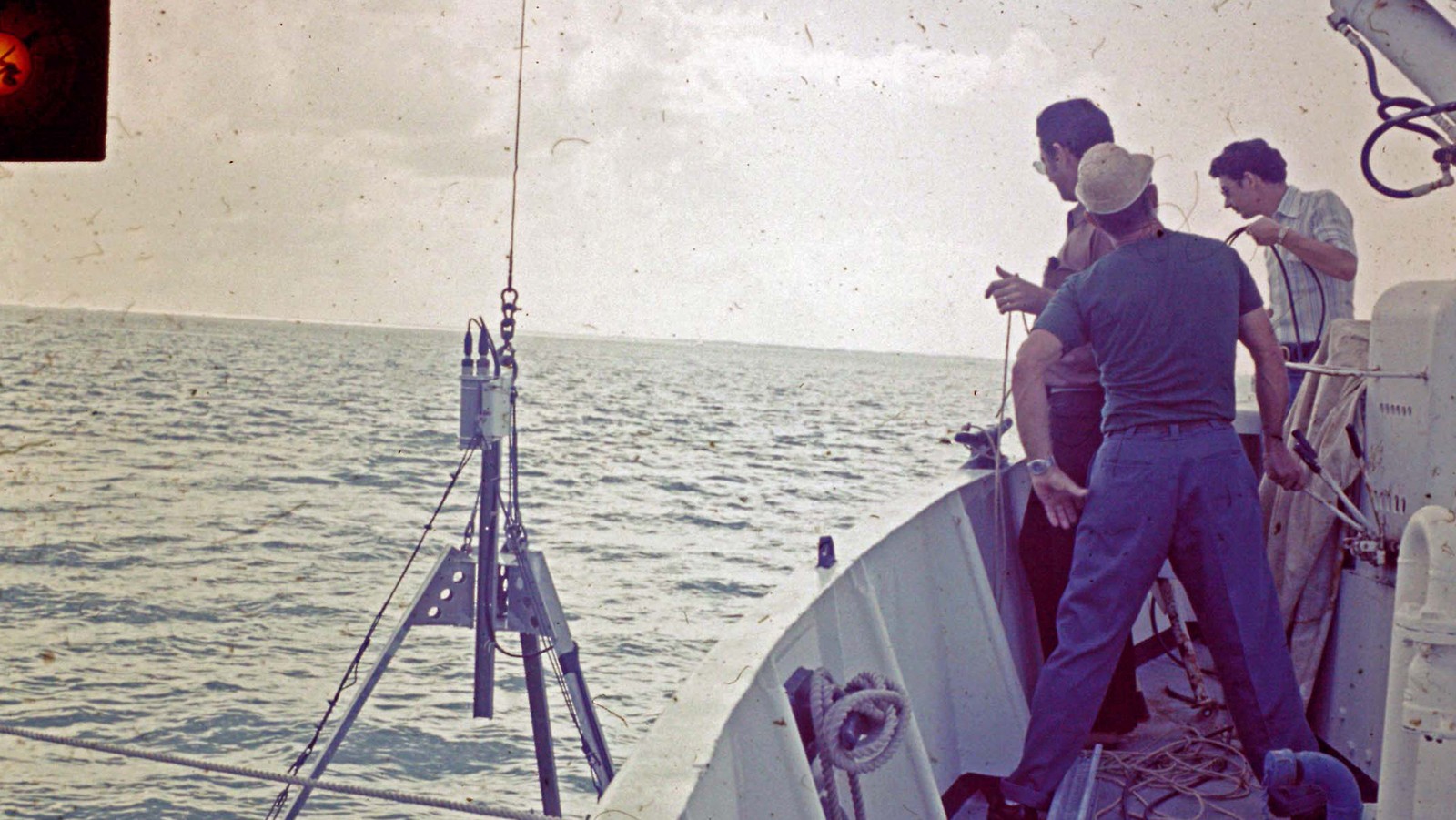
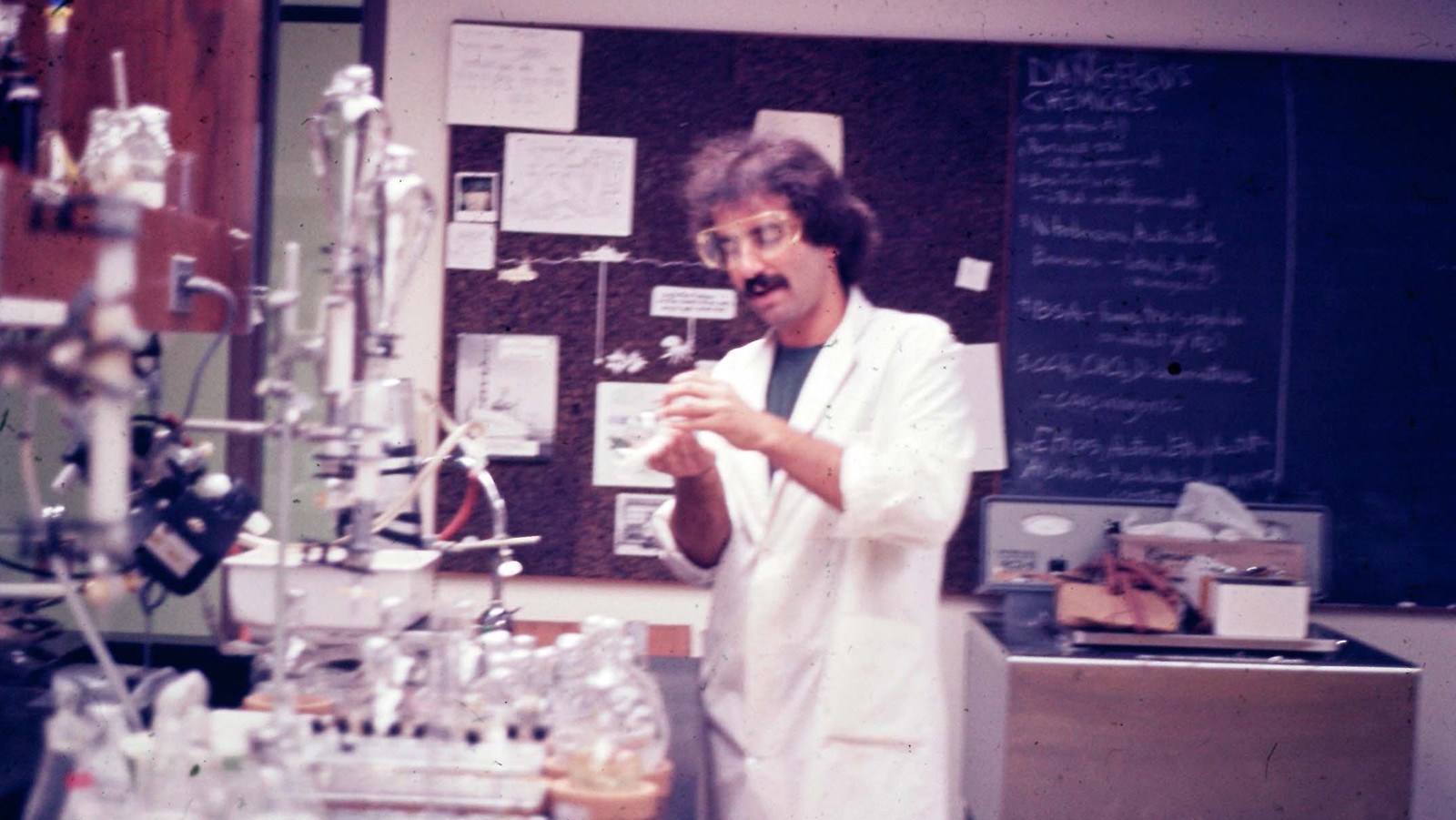
Shifting to Present Day
In the 1980s, all “Laboratories” within AOML are renamed as “Divisions.” An Ocean Acoustics Division is created and the National Hurricane Research Laboratory is transferred into AOML; its name is changed to the Hurricane Research Division. AOML’s Marine Geology & Geophysics Division and Sea-Air Interaction Division are abolished with the majority of staff transferred to the Ocean Chemistry or Physical Oceanography Divisions. In the early 2000s, the Ocean Acoustics Division expands to include satellite remote sensing and is renamed the Remote Sensing Division. Within a year, the division is absorbed into the Ocean Chemistry Division as the Acoustics Research Group. The remaining divisions at the lab are the current divisions of today: Physical Oceanography, Hurricane Research, and Ocean Chemistry & Ecosystems (The Ocean Chemistry Division underwent a name change to become the Ocean Chemistry and Ecosystems Division in 2013).
Research Accomplishments
1970 – 1999
2000 – Present Day
Hurricane History
The Beginning (1/2)
Since 1944 the United States Navy and Air Force had been flying reconnaissance missions into tropical cyclones. But it wasn’t until 1955, that Congress authorized additional funding for the United States Weather Bureau to create the National Hurricane Research Project (NHRP) to conduct research into hurricanes in hopes of improving scientific understanding and hence improving forecasts. Robert H. Simpson was appointed Director of the project and in one year he had the operational headquarters set up at the West Palm Beach, Florida airport. The United States Air Force loaned three aircraft and their crews to the effort. On August 13th, 1956 the first NHRP flight was made into Hurricane Betsy off the Turks and Caicos Islands.
The Beginning (2/2)
Researchers were initially interested in describing the three dimensional structure of hurricanes and in observing the middle and upper level winds which were thought to steer the storm. Over the next several years, an experiment was carried out in which a balloon-borne radio beacon was released in a hurricane's eye and the wind center was tracked remotely. At the end of the 1958 hurricane season, Simpson left the Directorship and Cecil Gentry became the new NHRP Director. A year later the Project was moved south to the Miami Aviation Building, co-locating it with the Miami hurricane forecast office. These two organizations became known as the National Hurricane Center (NHC). In 1961 NHRP's Flight Operations Group (the aircraft, crews and their ground support) were split from NHRP into a separate organization, the Research Flight Facility (RFF). This organization would eventually become NOAA's Aircraft Operations Center. NHRP’s researchers were left to focus on collecting and interpreting the data, while RFF's personnel concentrated on aircraft maintenance and operations.
The Stormfury Era (1/4)
In 1961 the US Navy and US Weather Bureau flew seeding experiments into Hurricane Esther, which led to the formal organization of Project STORMFURY in 1962. This Project would continue for more than twenty years and include NHRP, RFF, the US Navy, and the US Air Force in its operations. In 1960, RFF squired two DC6 aircraft to replace the borrowed Air Force planes. Satellites began to have a dramatic impact on hurricane reconnaissance and research during the early 1960's. It was no longer necessary to send aircrafts on long 'fishing expeditions', looking for signs of tropical disturbances. Using the satellites forecasters could pinpoint where the Hurricane Hunters needed to fly and researchers could watch the formation of a hurricane from the very start. The DC6s and some NHRP scientists reached out to the international meteorological community in 1963 and 1964 by participating in the International Indian Ocean Expeditions. This was the first in a long series of multinational experiments to which the Project was to contribute its expertise in tropical weather and in airborne meteorological observation. In 1964 NHRP was redesignated the National Hurricane Research Laboratory (NHRL) to signify a more permanent status.
The Stormfury Era (2/4)
In 1964, both NHC and NHRL moved to the Computer Center Building on the University of Miami campus in Coral Gables, Florida bringing the government researchers into closer contact with the academic community. The greater computing power available from the University led to the development of a numerical storm surge model and to NHC-67, a statistical hurricane track forecast model that outperformed all rivals. In 1966, the U.S. Government reorganized its earth science agencies into the Environmental Science Services Administration (ESSA). In 1967 Dr. Gentry became Director of STORMFURY in addition to NHRL Director. More restrictions were placed on where and when a hurricane could be a candidate for seeding and far fewer experiments were being flown. In the summer of 1969 STORMFURY flew its most extensive experiments in Hurricane Debbi. Also in that year, the DC6s and several NHRL scientists participated in the Barbados Oceanographic and Meteorological Experiment (BOMEX), with the purpose to better define the atmospheric and air/sea interaction processes in the tropics, and hence a better understanding of the energy source of hurricanes.
The Stormfury Era (3/4)
The Department of Commerce, in 1970, reorganized ESSA into the National Oceanic and Atmospheric Administration (NOAA). This included renaming the US Weather Bureau the National Weather Service (NWS), and separating the Environmental Research Laboratories (ERL) from the NWS. The National Hurricane Center was kept under NWS, the operational wing of NOAA, while the research laboratories, including NHRL, were put into ERL. The Experimental Meteorology Laboratory (EML) in collaboration with NHRL began the Florida Area Cumulus Experiment (FACE) in 1970. FACE attempted to document the benefits of cloud seeding over the Florida peninsula. This, in turn, was supposed to prove the efficacy of seeding in modifying hurricanes, but instead proved inconclusive. Also, during this time the acquisition of the C-130 by RFF for high altitude research began.
The Stormfury Era (4/4)
In 1971 STORMFURY experiments were flown into a late season Hurricane Ginger, which would be the last hurricane modification experiment flown under Project STORMFURY. In 1974, Dr. Noel LaSeur took over the Directorship and a year later the Experimental Meteorology Laboratory was joined to NHRL to form the National Hurricane and Experimental Meteorology Laboratory (NHEML). In the summer of 1974, a major experiment under the Global Atmospheric Research Project (GARP) started which was the GARP Atlantic Tropical Experiment (GATE). A number of NHEML scientist as well as the DC6s and several NOAA ships were involved in this massive twenty nation effort to examine the tropical waves that come off the west African coast each year, which spawn the Cape Verde hurricanes.
The Orion P3s (1/4)
In 1973 it was decided that the DC6s were reaching the end of their useful life, and that NOAA, NHRL, and the Research Flight Facility (RFF) needed to upgrade the air fleet. NHRL and RFF went through a period of belt tightening, including reductions in staff and cancelling all STORMFURY flights for three years, in order to finance the purchase of two Lockeed P3 Orions. The new aircraft were outfitted with the latest in computers and weather instruments, including three different radar antennas on each aircraft. The quality of the field data was boosted considerably when these planes became available in 1975 and 1976. In 1975 the US Navy ended thirty years of hurricane reconnaissance duty and deactivated its Hurricane Hunter squadrons, leaving this function to the US Air Force and the NOAA aircraft.
The Orion P3s (2/4)
In 1977, Dr. Stanley Rosenthal took over as NHEML Director. The following year in 1978, NHEML was made an independent laboratory under ERL, and the year after that, 1979, NHEML and NHC were moved from the University of Miami campus to the Gables One Tower. Under Dr. Rosenthal’s directorship the emphasis of research moved away from weather modification studies and toward computer modeling. In 1980, NHEML was organizationally placed under the Atlantic Oceanographic and Meteorology Laboratories (AOML), a group of Miami-based NOAA laboratories which were housed on Virginia Key. Two years later, 1982, the Experimental Meteorological Laboratory portion of NHEML was separated and moved to Boulder, Colorado and the Lab was again called the National Hurricane Research Laboratory (NHRL). Another year later, 1983, NHRL was moved physically out to AOML on Virginia Key, ending 25 years of co-location with NHC. NHRL was then renamed the Hurricane Research Division (HRD), its current sobriquet, when AOML was redesignated a single Laboratory.
The Orion P3s (3/4)
In 1981, the NOAA C130 was decommissioned, leaving only the two P3s to carry on hurricane research. To compensate for this, the instrumentation on the P3s was greatly improved, with Knollenberg cloud physics probes installed, and Doppler processing added to the tail radars. Doppler allowed scientists to derive the hurricane's wind fields, instead of just having wind information from along the aircraft's track, the wind field from the entire inner core could be mapped out. This provided researchers with greater insight into hurricane structure and dynamics. The Knollenberg probes allowed HRD cloud physicists to image individual cloud particles by using an array of laser diodes. Scientists could now see what sort of particles they were flying through in real time, whether rain, graupel, ice, or needles.
The Orion P3s (4/4)
Project STORMFURY came to a formal end in 1982, as no hurricane modification experiments had been flown in over a decade, and as serious doubts about the assumptions of STORMFURY came to be expressed. In part the new cloud physics data showed that the amount of supercooled liquid water available in a hurricane was far less than had been thought, and studies of the natural cycles of storm strength showed that what were thought to be the effect of seeding might have been natural. HRD scientists published a paper in 1985 demonstrating many of the flaws in the original STORMFURY premises. Hurricane modification studies and experiments were shelved for the foreseeable future.
The Synoptic Flow Era (1/5)
With Hurricane Debby in 1982 the Lab began a series of experiments using Omega dropwindsondes to fill in the vast oceanic data voids in the forecast models. One or both P3s would fly synoptic scale patterns around the hurricane, and every 20 minutes drop a sonde out of the plane. The dropwindsonde would drift down on a parachute and radio back to the plane the temperature, humidity, and pressure, and using the Omega navigational signals, triangulate its position. This information was used by the plane's computer to estimate the winds the sonde was falling through. Including this vital information in the hurricane track forecast models was shown to improve the accuracy by 20-30%. A group of HRD scientists and technicians remained stationed at NHC to compile catalogs of output from a new storm surge model, the Sea, Lake Overland Surges from Hurricanes (SLOSH). These catalogs were then given to emergency personnel in the target cities to aid in evacuation planning.
The Synoptic Flow Era (2/5)
Computer modeling during the early 1980's involved work on a 12 level nested grid model as well as quasi-spectral and non-hydrostatic models. HRD and the Aircraft Operations Center (AOC), formerly RFF, used films taken during hurricane flights to update the sea surface catalog used to estimate surface wind speeds. In 1983 a new remote sensing instrument, the Step Frequency Microwave Radiometer (SFMR), was installed on one of the P3s. The device could estimate the wind speed on the ocean's surface. Also in 1982/1983, the dramatic El Niño event spurred research into the relationship of ENSO and Atlantic hurricane frequency, and also renewed interest in hurricane climatology. AOML researchers began looking at decadal and longer patterns in hurricane occurrence that might be linked to long term oceanic cycles.
The Synoptic Flow Era (3/5)
The research in the mid-1980’s concentrated on the new Doppler radar and cloud physics data. In 1985 HRD's microphysicists and radar specialist participated in the pre_STORM experiment which studied mesoscale convective complexes in the vicinity of Oklahoma to better understand their structure, dynamics, and predictability. In 1986, several HRD scientists were involved in the Genesis of Atlantic Lows Experiment (GALE) which was designed to examine winter storms off the east coast of the United States. It was hoped the knowledge gained from GALE would give new insights into rapidly intensifying hurricanes. The following year, 1987, HRD scientists traveled with the NOAA P3s to Darwin, Australia to participate in the Equatorial Mesoscale Experiment (EMEX). EMEX was to profile oceanic cloud clusters in the monsoonal flow near the equator. During the Summer of 1991 HRD personnel travelled to Acapulco, Mexico with the NOAA P3s to participate in the Tropical EXperiment in MEXico (TEXMEX). The experiment was designed to investigate incipient tropical cyclones as they moved into the Eastern North Pacific, off the Mexican coast, and look at the role of moisture, as measured by equivalent potential temperature, in the formation of hurricanes.
The Synoptic Flow Era (4/5)
Trouble forecasting the intensity changes of Hurricane Joan in 1988 inspired HRD scientists to try and improve on SHIFOR, the climate and persistence intensity forecast model. By 1989 work had begun on the Statistical Hurricane Intensity Prediction Scheme (SHIPS). The scheme became operational at NHC in 1995, and by 1997 was showing skill over SHIFOR. The field of intensity forecasting still presents an area where considerable improvement may be made, and HRD continues to collaborate with Co-operative Institute for Research in the Atmosphere (CIRA) scientists on research to improve the SHIPS.
The Synoptic Flow Era (5/5)
In August of 1992, Hurricane Andrew had a major impact on south Florida and on HRD. Andrew prompted a move by the Aircraft Operations Center to the Tampa area, ending thirty-two years of Miami based operation. It also sparked NHC to move from their Gables One Tower facility to a hurricane-proof center at Florida International University. Late in 1992 and early in 1993, HRD scientists once again traveled with the NOAA P3s to participate in another international weather science project, the Tropical Ocean-Global Atmosphere Coupled Ocean Atmosphere Response Experiment (TOGA COARE). Based at Guadalcanal, the experiment was designed to measure the heat, moisture, and momentum fluxes as well as the rainfall over the warm pool in the western Pacific, which is a critical area in driving the heat engine of the atmosphere. In 1993 Dr. Robert Burpee became the new HRD Director. Dr. Burpee had headed the Division's Hurricane Field Program for a number of years, and had spearheaded the Synoptic Flow experiments, which had long needed an aircraft that would fly much higher than the P3s, and sample more of the atmosphere.
The Gulfstream Jet era (1/3)
In 1994, NOAA began obtaining a high-altitude jet for hurricane and synoptic weather investigations. A Gulfstream IV (G-IV) jet was purchased by NOAA, instrumented, and ready to fly by late 1996. It was first used in a hurricane synoptic flow mission in 1997. New dropwindsondes were developed to include the Global Position Satellites (GPS) to obtain more accurate positions, and hence, more accurate winds. These new sondes were also more liquid water tolerant and for the first time soundings were made inside the hurricane eyewall, in Hurricane Guillermo over the East Pacific. At the start of the 1995 hurricane season Dr. Hugh Willoughby took over as Director of HRD.
The Gulfstream Jet era (2/3)
HRD has been experimenting with ensemble predictions. Small perturbations are introduced into a computer model's initial conditions and run several times with different perturbations. The resulting suite of forecasts are then synthesized into one forecast. These ensemble forecasts help point to areas over the open ocean from which data is most critical, and G-IV dropsonde flights can be planned for these sections. HRD scientists participated in the NORth Pacific EXperiments (NORPEX) in 1998 and 1999. Run at the same time as the CALJET experiment using the P3 aircraft, these experiments measured Pacific storms that could threaten the western U.S. coast and examined how they might be affected by the 1997-98 El Nino. NORPEX was renamed Winter Storm Reconnaissance '99. HRD participation continued with Winter Storm Reconnaissance 2000, operating out of Anchorage, studying Gulf of Alaska polar lows, and WSR 2001, operated out of Honolulu, studying Kona lows and jet stream turbulence.
The Gulfstream Jet era (3/3)
In 2003 Dr. Frank Marks, for many years the leader of the annual Hurricane Field Program, assumed the Directorship. In 2006, HRD celebrated the 50th Anniversary of its field operations. During the 2002-2004 field programs, HRD participated in the Coupled Bondary Layer Air-Sea Transfer (CBLAST) project along with university partners in examining the lower-level parts of hurricanes. This included flying into the boundary layer of the atmosphere in the clear air between rainbands in hurricane force winds. The hyperactive 2005 hurricane season preempted HRD's participation in the scheduled examination of tropical cyclone formation in the eastern Pacific, and concentrated on the examination of the wealth of hurricane activity in the Gulf of America instead. This included the cooperative Hurricane Rainband and Intensity Experiment (RAINEX) project with university colleagues and the start of the Intensity Forecasting Experiment (IFEX) in partnership with NHC and EMC. Studies of Katrina and Rita provided new insights into the process of Rapid Intensification.
The Hurricane Forecast Improvement Era (1/3)
Hurricane Katrina's devastation spurred greater funding for Rapid Intensification studies and the inauguration of the Hurricane Forecast Improvement Project (HFIP) which HRD has helped to manage. This meant a new era emphasizing efforts to ingest inner-core data from hurricanes into the new-generation of hurricane models that emphasize intensity forecasting. One such project is the Tail-Doppler Radar experiment, carried out from 2009 to the present. This involves processing data from the P-3's Tail Doppler radar onboard the aircraft, then transmitting them in real-time via satellite to ground stations. This data is ingested into operational forecast models in an effort to improve the intensity forecasts.
The Hurricane Forecast Improvement Era (2/3)
The 2005 hurricane season also saw an Aerosonde unmanned airborne vehicle (UAV) fly into Tropical Storm Ophelia. This was the result of several years' effort attempting to place a UAV into the critical (but dangerous) boundary layer in a tropical cyclone. In 2007, another Aerosonde was flown into hurricane-force winds for the first time in Tropical Storm Noel off of the Carolinas. Unfortunately, troubles with air corridor access limited further work with the shore-launched Aerosondes. However, HRD began cooperating with the development of the P-3 launched COYOTE UAV. This resulted in successful deployment with COYOTEs in Hurricane Edouard in 2014 and in Hurricane Maria in 2017.
The Hurricane Forecast Improvement Era (3/3)
HRD will continue in the 21st Century as NOAA's focus for hurricane research, with extensive cooperation with the National Hurricane Center, the Aircraft Operations Center, the US Air Force, the US Navy, other government agencies, the academic community, and with the private sector. Improvements in computer forecasts are expected to come with further work, as is improved knowledge of hurricane climatology in a changing world.
A Legacy of Leadership
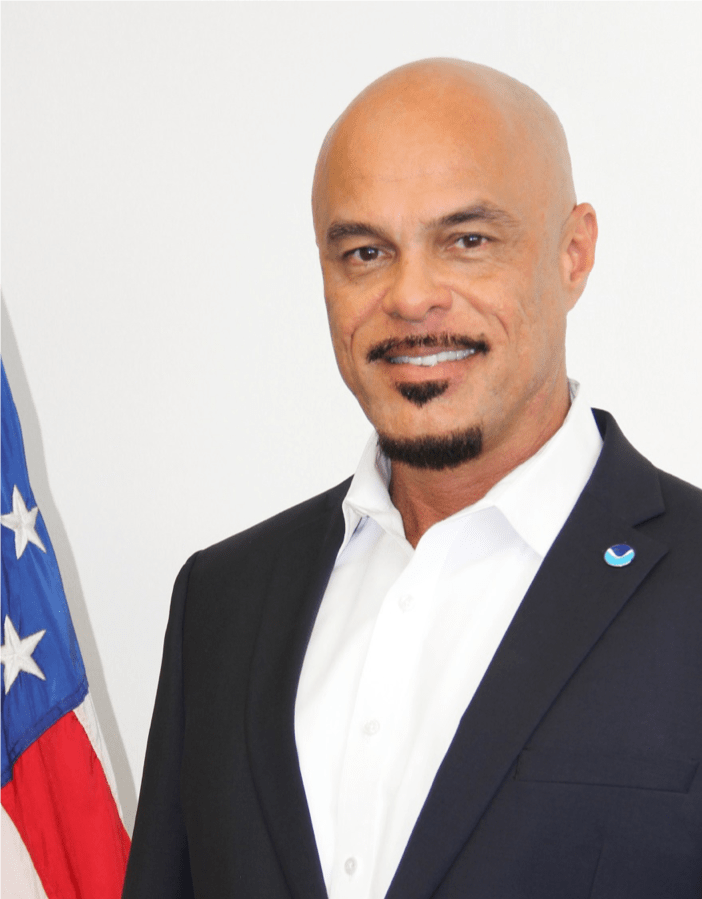
John Cortinas, Ph.D.
2019-2024
Dr. John Cortinas became the Director of the National Oceanic and Atmospheric Administration’s (NOAA) Atlantic Oceanographic and Meteorological Laboratory in the spring of 2019. Dr. Cortinas had served nine years as director of OWAQ, NOAA Research’s program to improve NOAA National Weather Service products and services for high-impact weather events, before coming to AOML. In this office, he also oversaw NOAA’s U.S. Weather Research Program (USWRP), the Joint Technology Transfer Initiative (JTTI), and hosted the National Earth System Prediction Capability project office. Cortinas has extensive experience transitioning research to operations, particularly through USWRP and JTTI.
Prior to joining OWAQ in 2010, Cortinas directed NOAA Research’s Cooperative Institute program, overseeing the administration of a program that supported more than 1000 scientists and students at United States universities working with NOAA. In this position, he oversaw administration, grant management, and science policy development for cooperative institutes across the United States and led the development of NOAA’s first Administrative Order governing CIs and its accompanying handbook.
From 1992-2003, Cortinas was a research scientist at NOAA’s Cooperative Institute for Mesoscale Meteorological Studies at the University of Oklahoma, working with scientists at NOAA Research’s National Severe Storms Laboratory to improve winter weather products and services at NOAA’s National Weather Service Storm Prediction Center. In 2000, he became the first CIMMS assistant director of NOAA Relations, overseeing NOAA-supported activities at CIMMS.
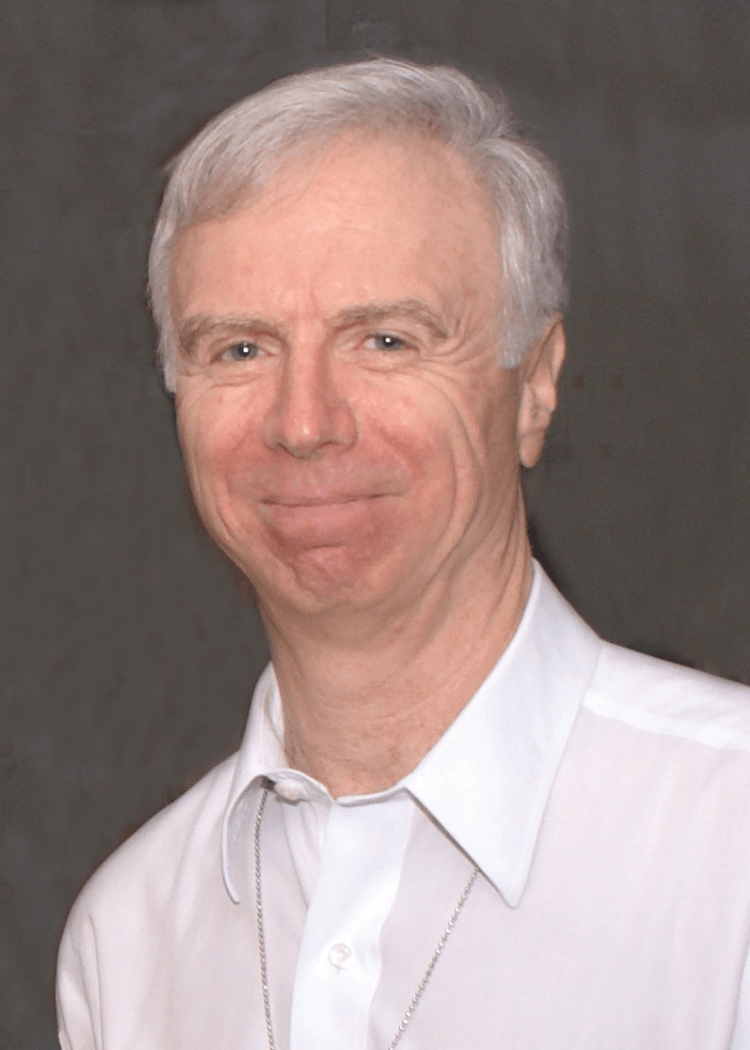
Robert Atlas, Ph.D.
2005-2019
Dr. Robert Atlas retired as the Director of the National Oceanic and Atmospheric Administration’s (NOAA) Atlantic Oceanographic and Meteorological Laboratory in March 2019. In addition to managing the laboratory, Dr. Atlas was the director of NOAA’s Quantitative Assessment of Observing Systems Program and is a world expert in the use of Observing System Simulation Experiment (OSSE) systems for weather and oceans applications, a technology that enables scientists to determine the quantitative value of new observing systems before funds are allocated for their development. Dr. Atlas maintains an active research portfolio focusing on the prediction, movement and strengthening of hurricanes using satellite data and computer models as a means to study these hurricane behaviors.
Dr. Atlas received his Ph.D. in Meteorology and Oceanography in 1976 from New York University. Prior to receiving the doctorate, he was a weather forecaster in the U.S. Air Force where he maintained greater than 95 percent forecast accuracy. From 1976 to 1978, Dr. Atlas was a National Research Council Research Associate at NASA’s Goddard Institute for Space Studies, New York, an Assistant Professor of Atmospheric and Oceanic Science for SUNY and Chief Consulting Meteorologist for the ABC television network.
In 1978, Dr. Atlas joined NASA as a research scientist. He served as head of the NASA Data Assimilation Office from 1998-2003, and as Chief meteorologist at NASA GSFC from 2003-2005. Dr. Atlas has performed research to assess and improve the impact of satellite temperature sounding and surface wind data since 1973. He was the first person to demonstrate the significant impact of quantitative satellite data on numerical weather prediction. Dr. Atlas is a recipient of the NASA Medal for Excellence in Scientific Achievement and a Fellow of the American Meteorological Society.
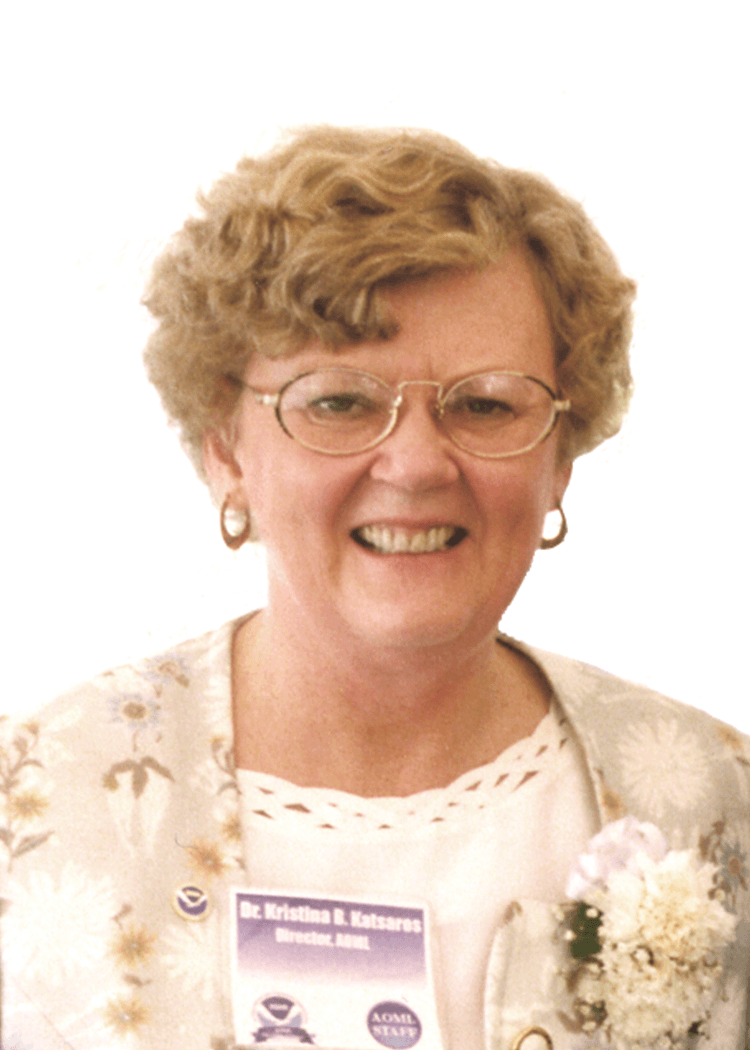
Kristina B. Katsaros, Ph.D.
1997-2003
Kristina B. Katsaros spent 20 years as a faculty member of the Department of Atmospheric Sciences at the University of Washington and 5½ years as Director of the Department of Oceanography from Space at Insitut Francais de Recherch pour l’Exploitation de la Mer (IFREMER) in France. Her scientific pursuits include all aspects of air-sea interaction: turbulent and radiative fluxes, wave generation, surfactant effects, and a thesis project on the effects of rain on the upper ocean. She has performed laboratory as well as field experiments.
Since the launch of the SEASAT satellite in 1978, she has also employed active and passive microwave remote sensing for studies of storms, cloud systems, and the physics of wind and wave effects on microwave emission and backscatter from the sea surface.
She led a group at AOML that aimed to make full use of the observations by microwave instruments on aircraft and satellites for research within the Laboratory on oceanic circulation, climate scale variability, and hurricane development. This research involves cooperation with colleagues within other branches of NOAA, at the Jet Propulsion Laboratory, at IFREMER, at the Canada Centre for Remote Sensing and at the University of Washington.
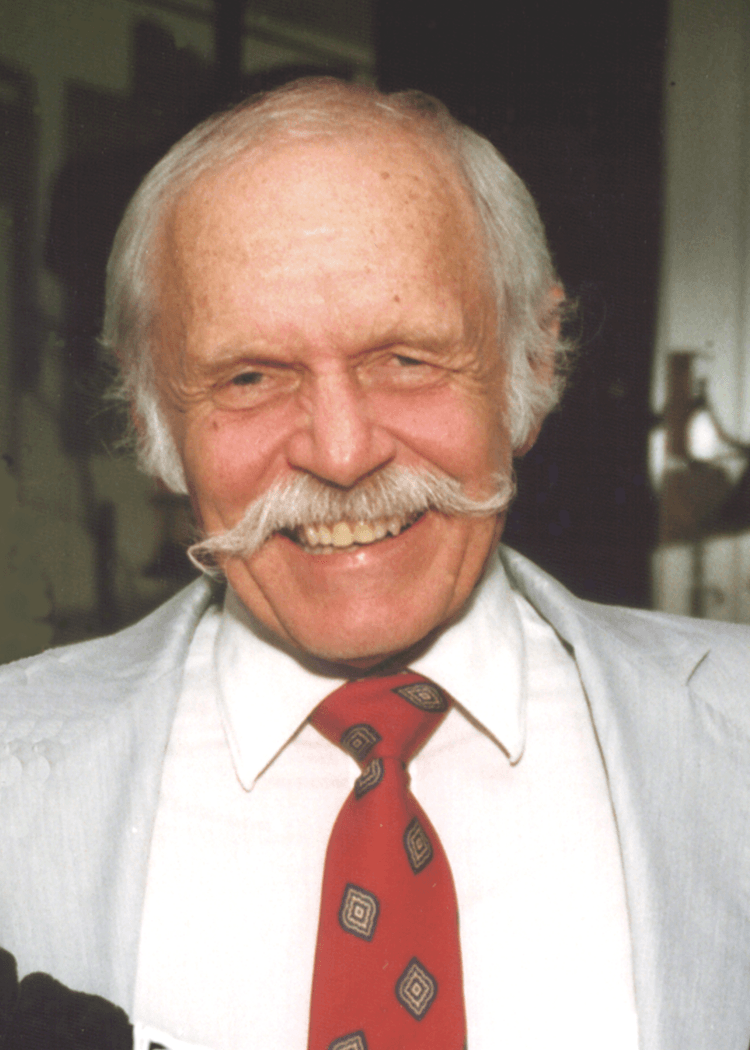
Hugo F. Bezdek, Ph.D.
1980-1997
Hugo Bezdek joined the Scripps Institution of Oceanography in 1970 following completion of a degree in physics. After four years of projects in underwater acoustics and air-sea transfer, he became a program manager at the Office of Naval Research (and ceased, he says, doing the actual work). In 1980, he moved to another administrative position as Director of AOML. “During the last few years,” he reports, “I have realized the error of my ways and have been struggling mightily to redress past sins and return to honest work once again. With the help of generous people such as my co-authors, perhaps such an eventuality is possible.”
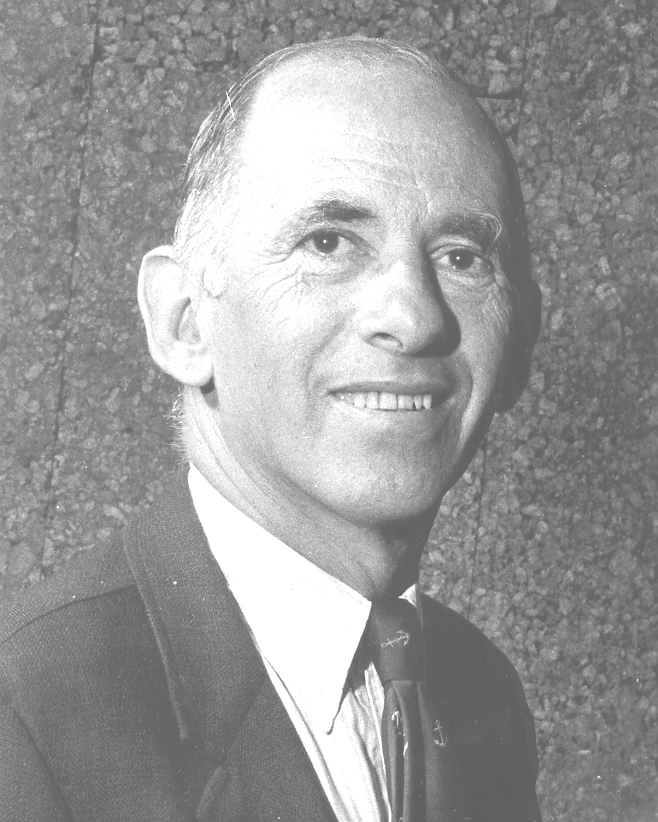
Harris B. Stewart, Ph.D.
Founder & First Director
1967-1978
Dr. Harris B. Stewart, Jr. was AOML’s much beloved founder and first director. Dr. Stewart, or “Stew” as many called him, leaves behind a remarkable career in marine science that spanned more than 40 years and a multitude of caring friends and colleagues.
“The depth of loyalty and respect of his friends was unbelievable, and it was true all the way back to his school days. Stew achieved the near impossible goal of being both a brilliant scientist and charismatic manager.”
-Jack Kofoed
Dr. Stewart served as director of AOML until October 1978, at which time he retired from federal service. He was a prolific writer, publishing over 120 scientific articles during his years as a marine scientist. He also authored 12 books with topics ranging from oceanography, poetry, to humor. Dr. Stewart is survived by daughter Dorothy Barrett, son Harry, brother John, and countless numbers of colleagues, admirers, and friends.
Our Founder
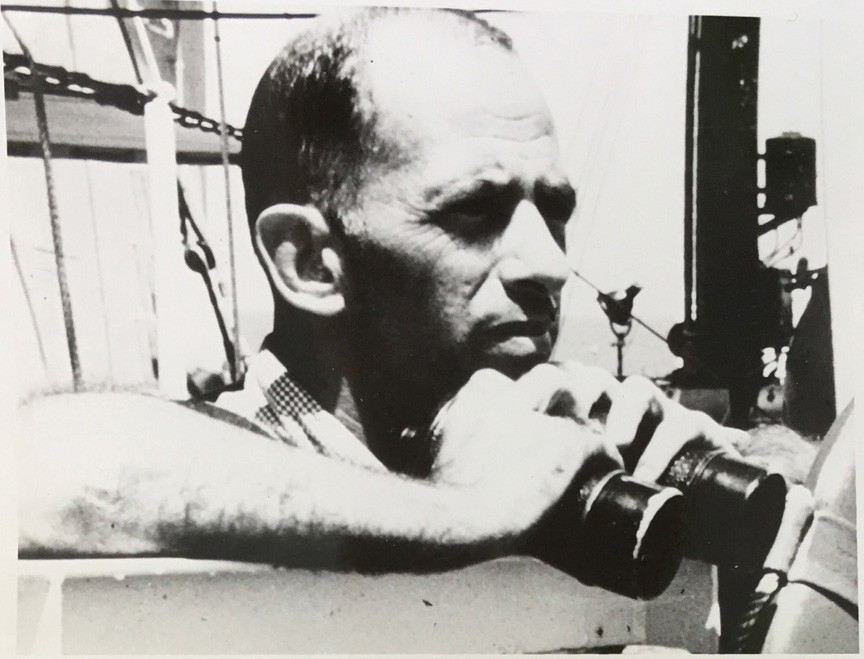
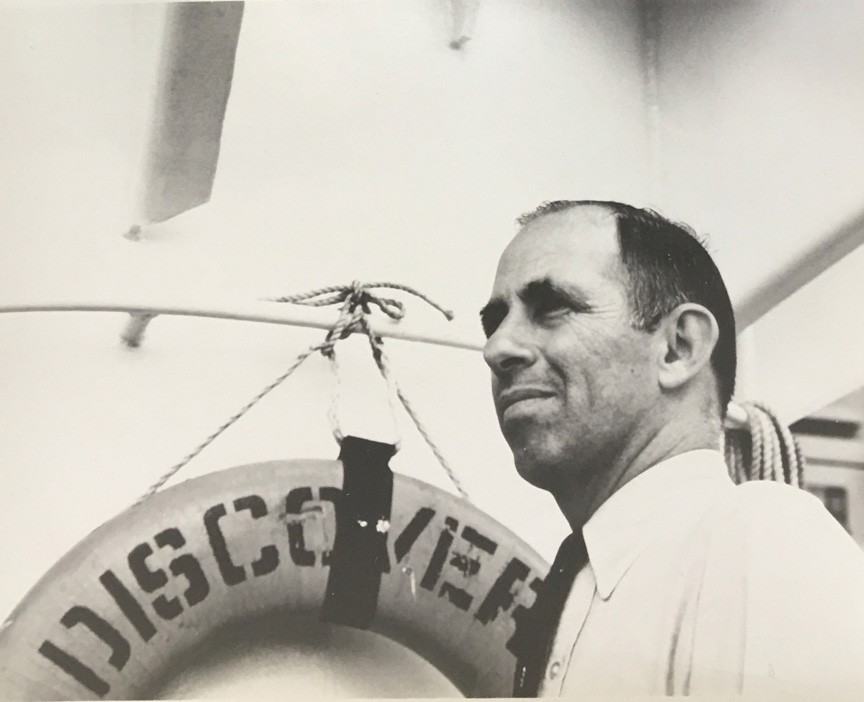
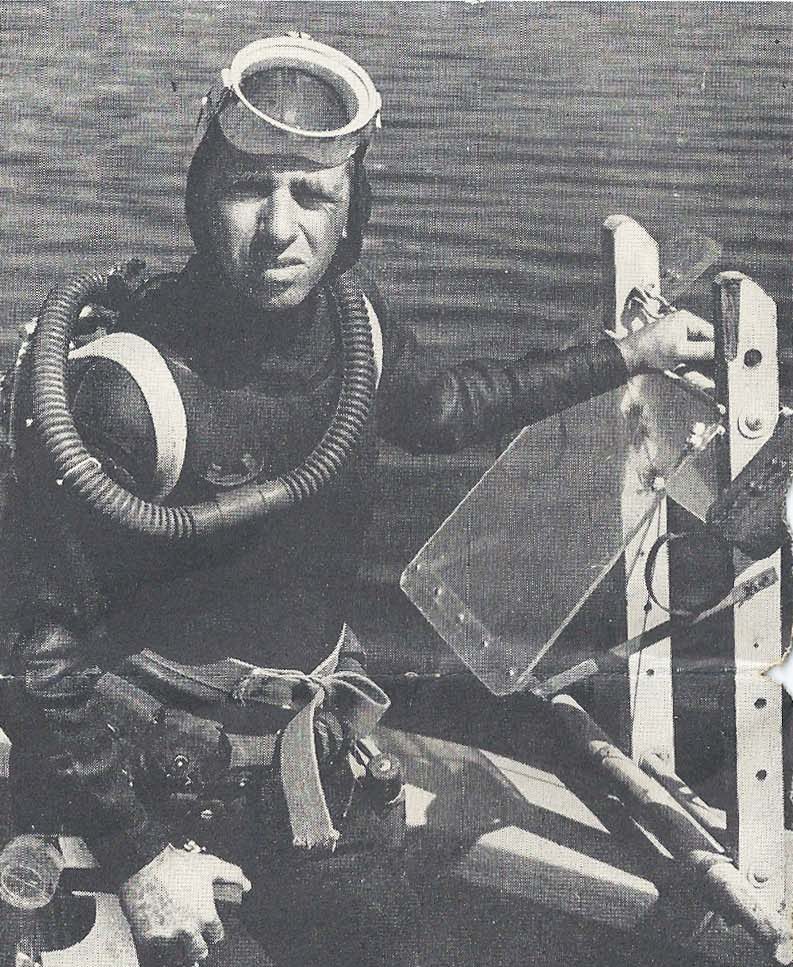
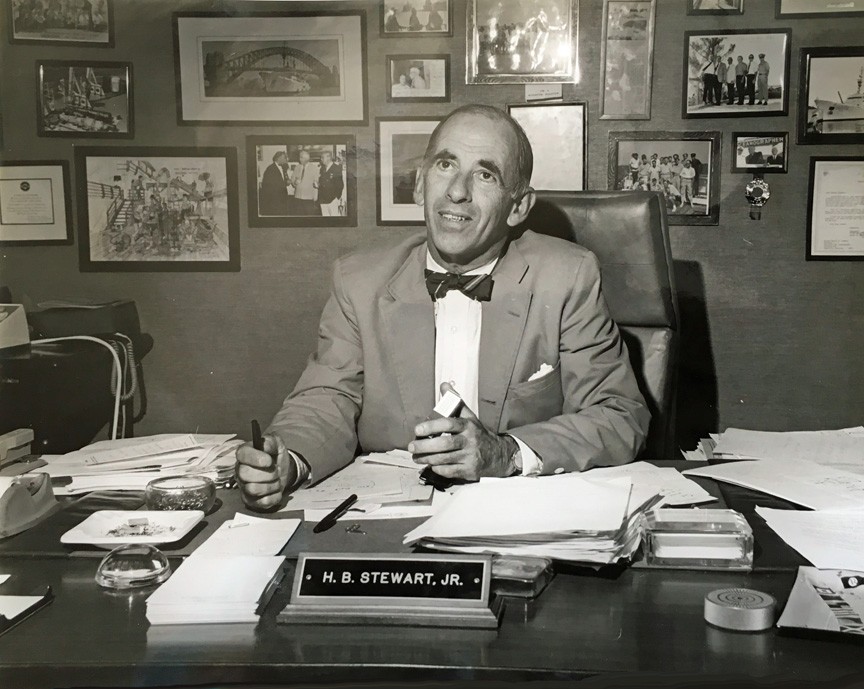
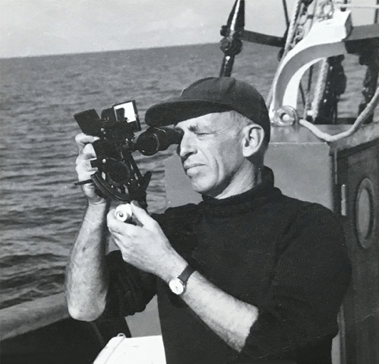
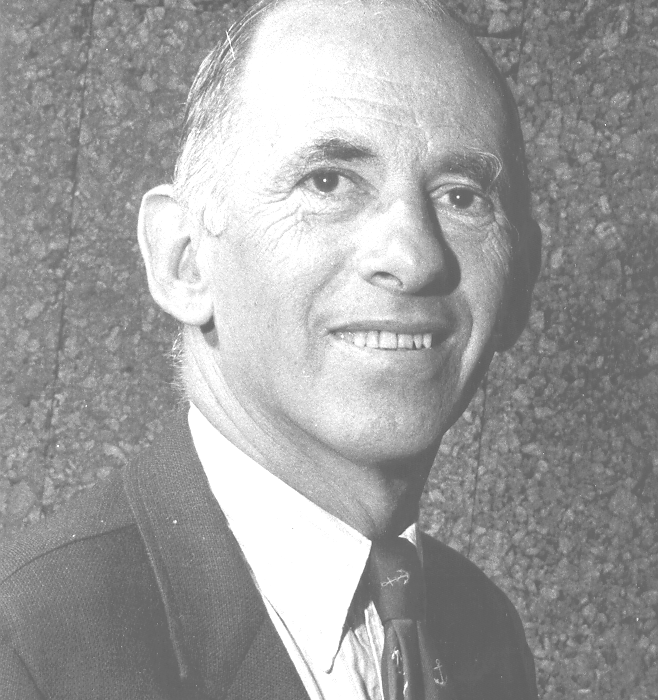
The Coggins Art Gallery
Harris B. Stewart commissioned Jack Coggins to do a series of illustrations that reflected the work we did at AOML. Below is a gallery of the highlights of that collection.
